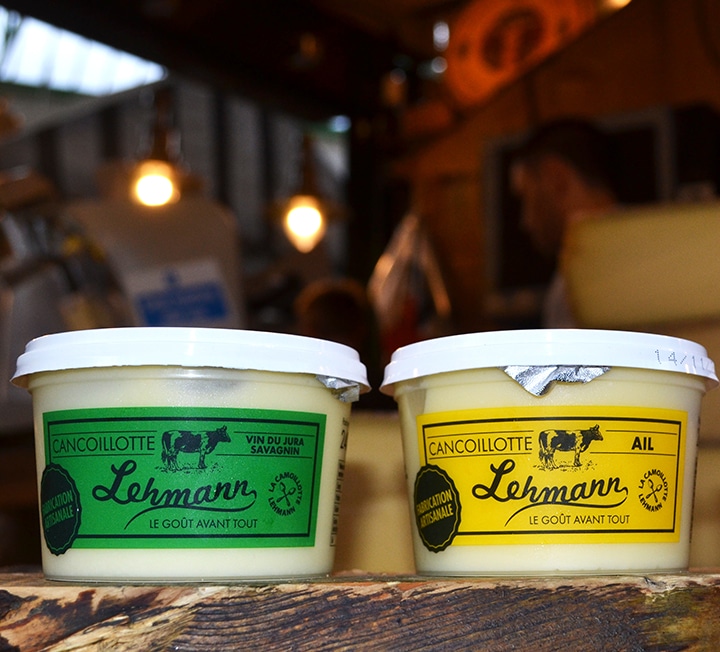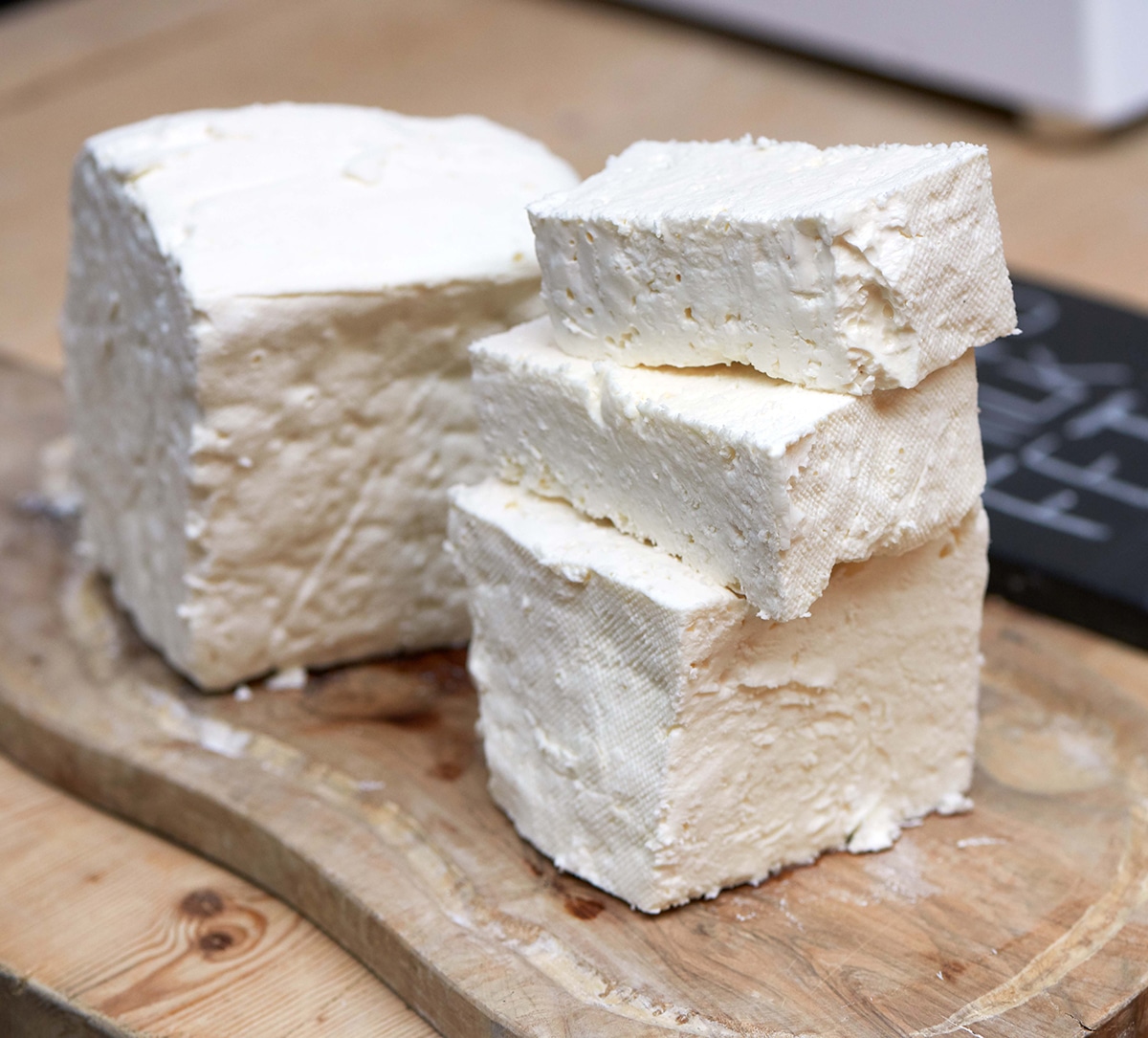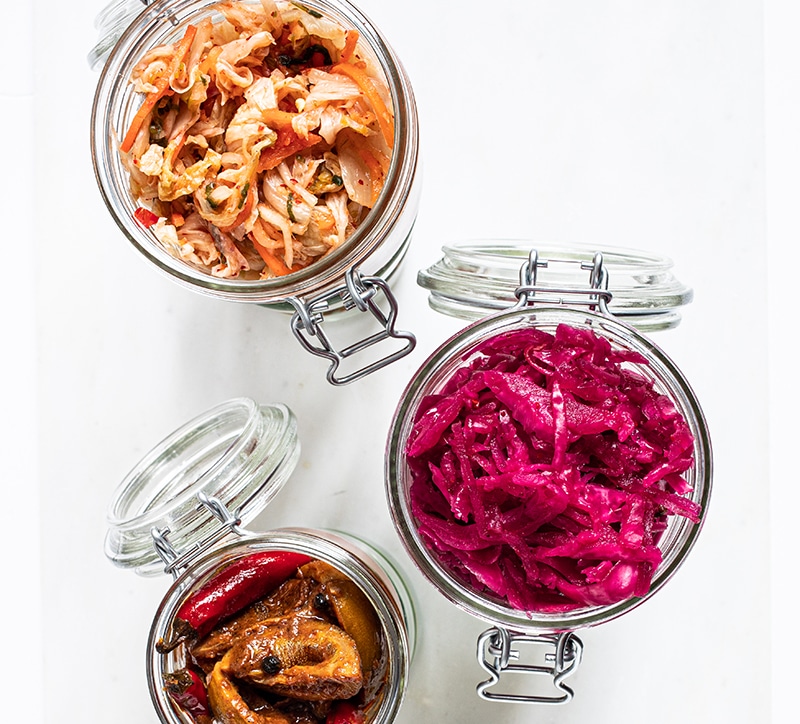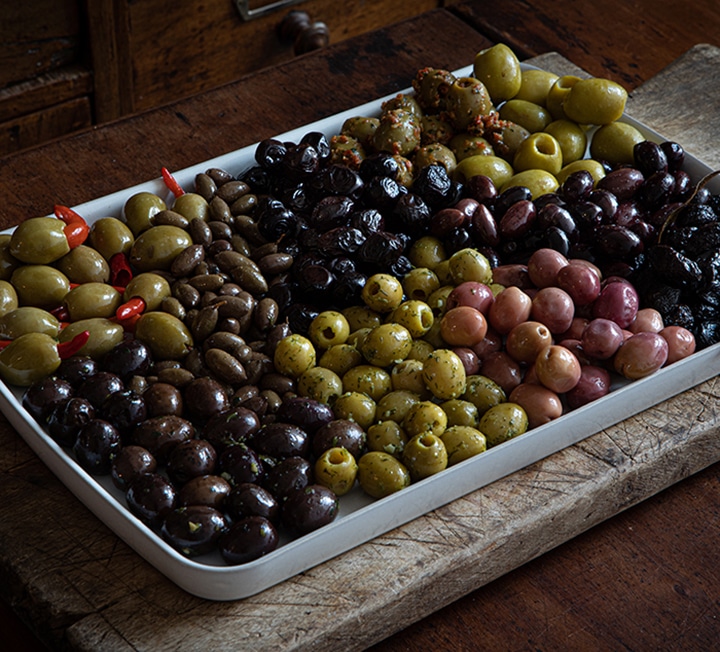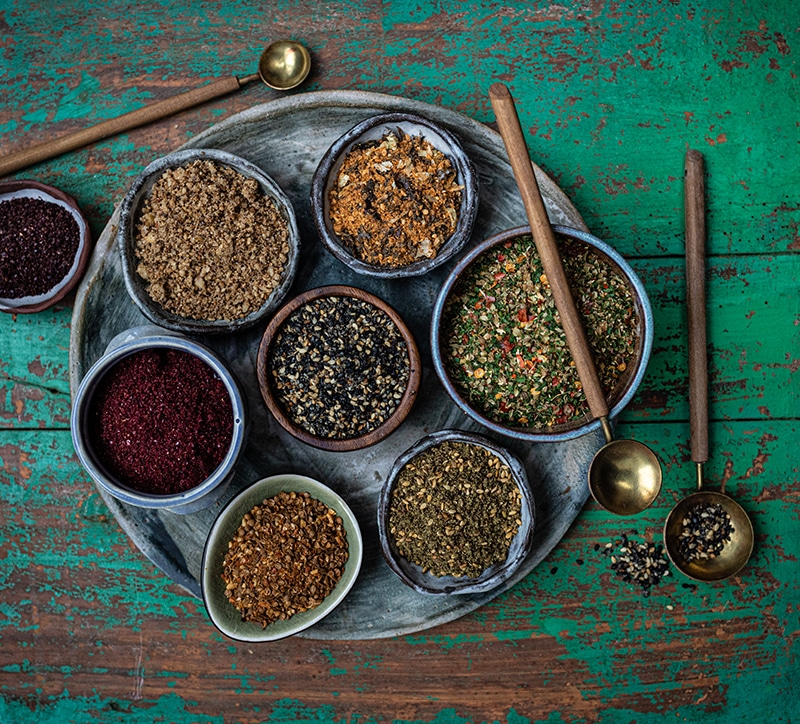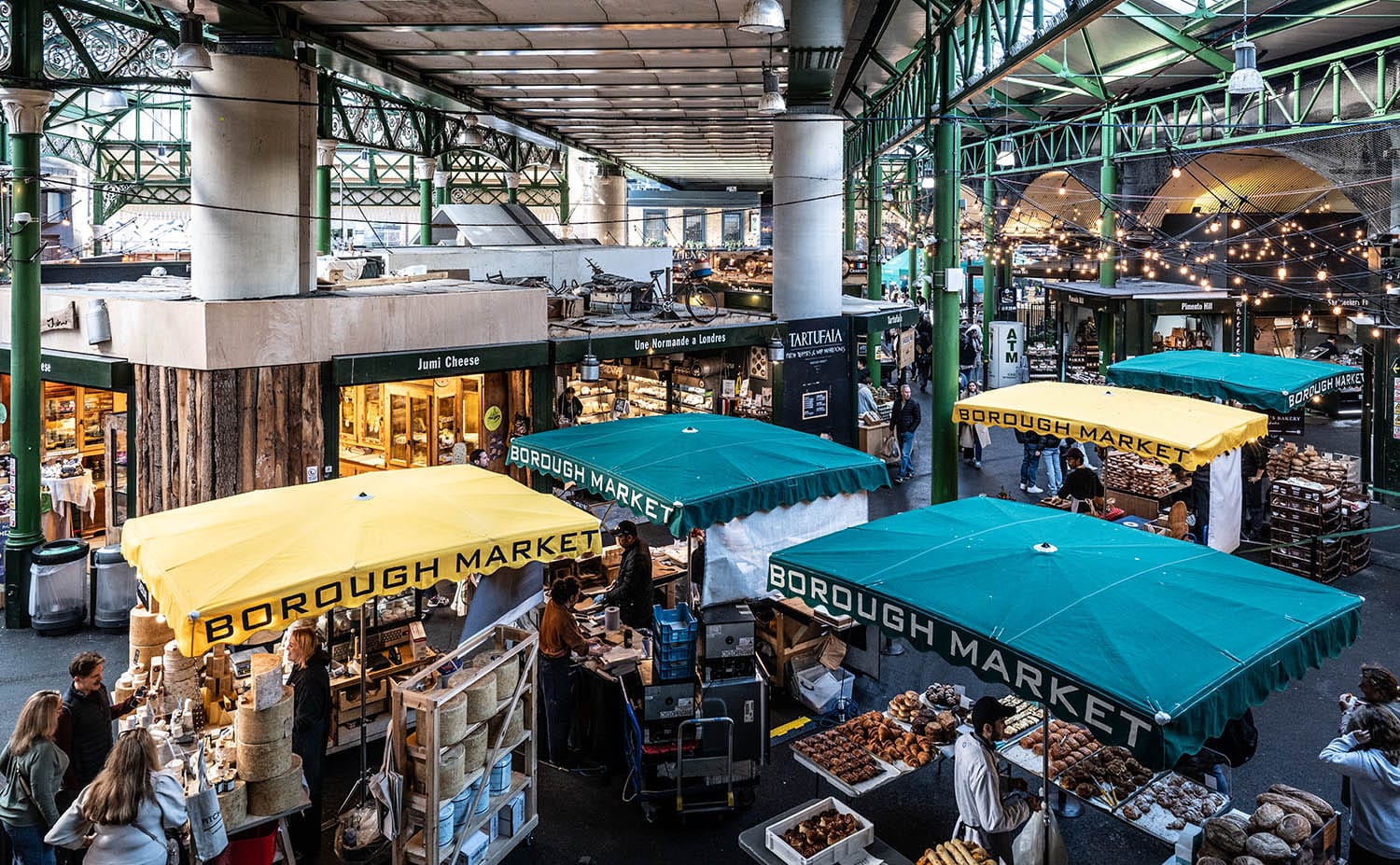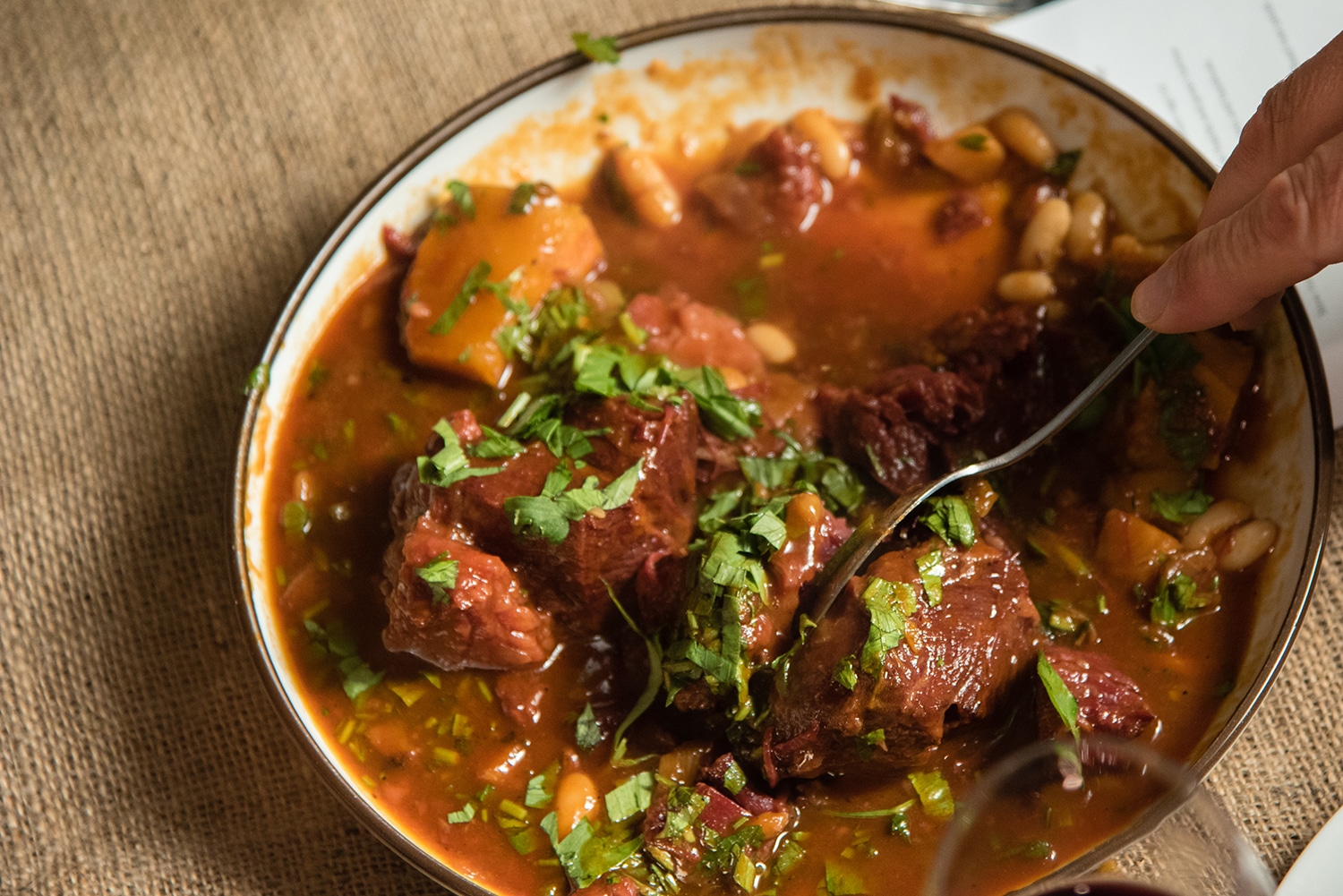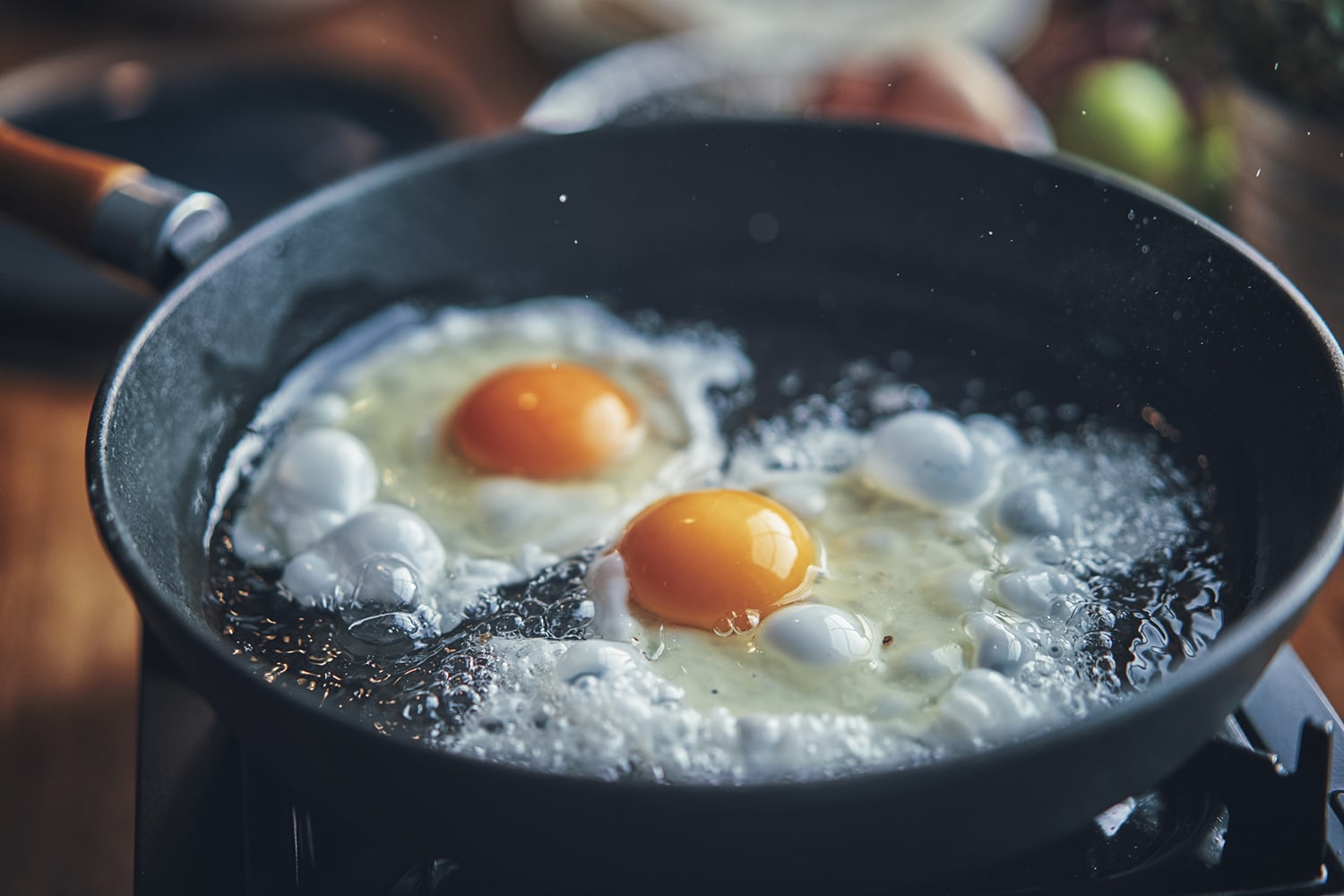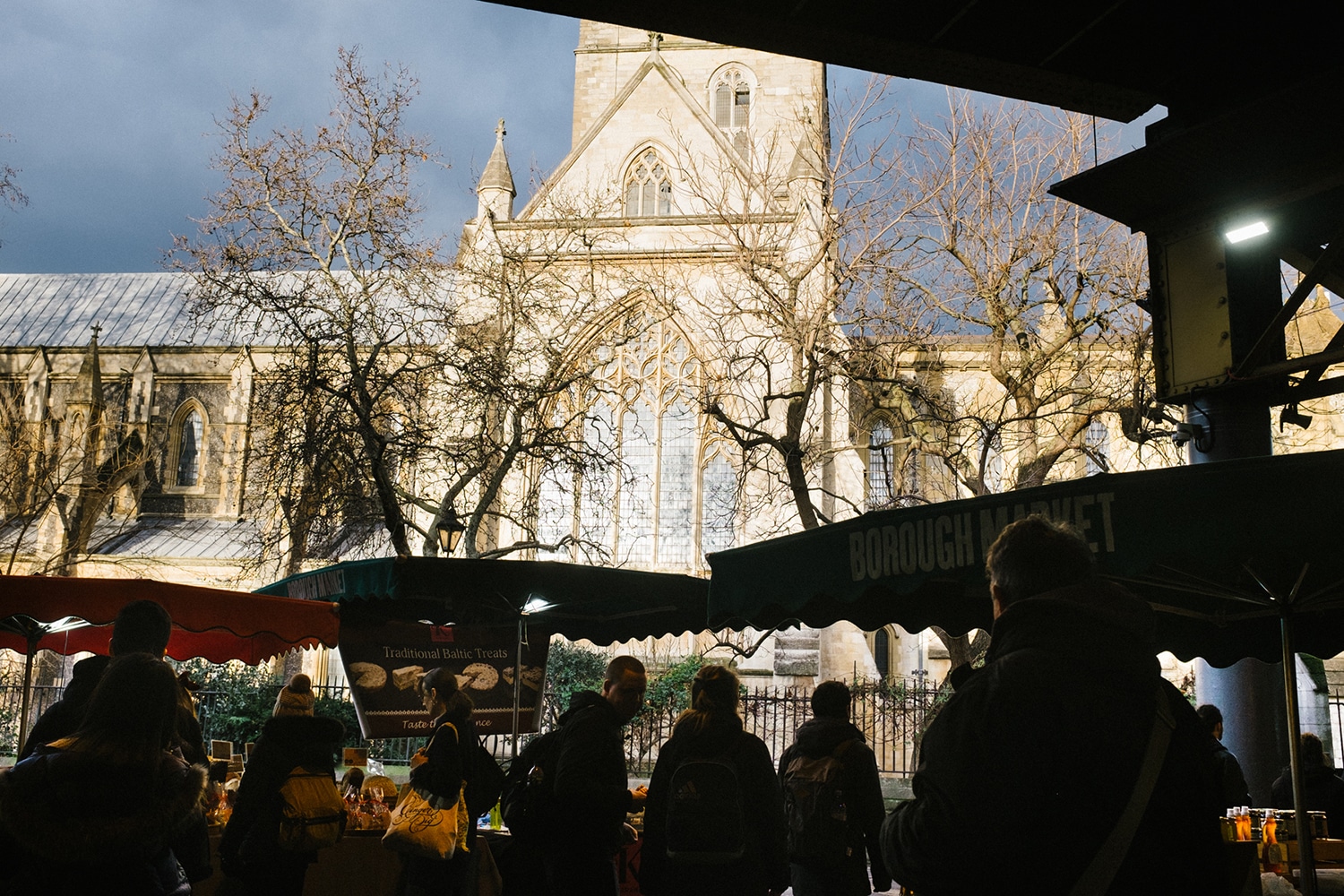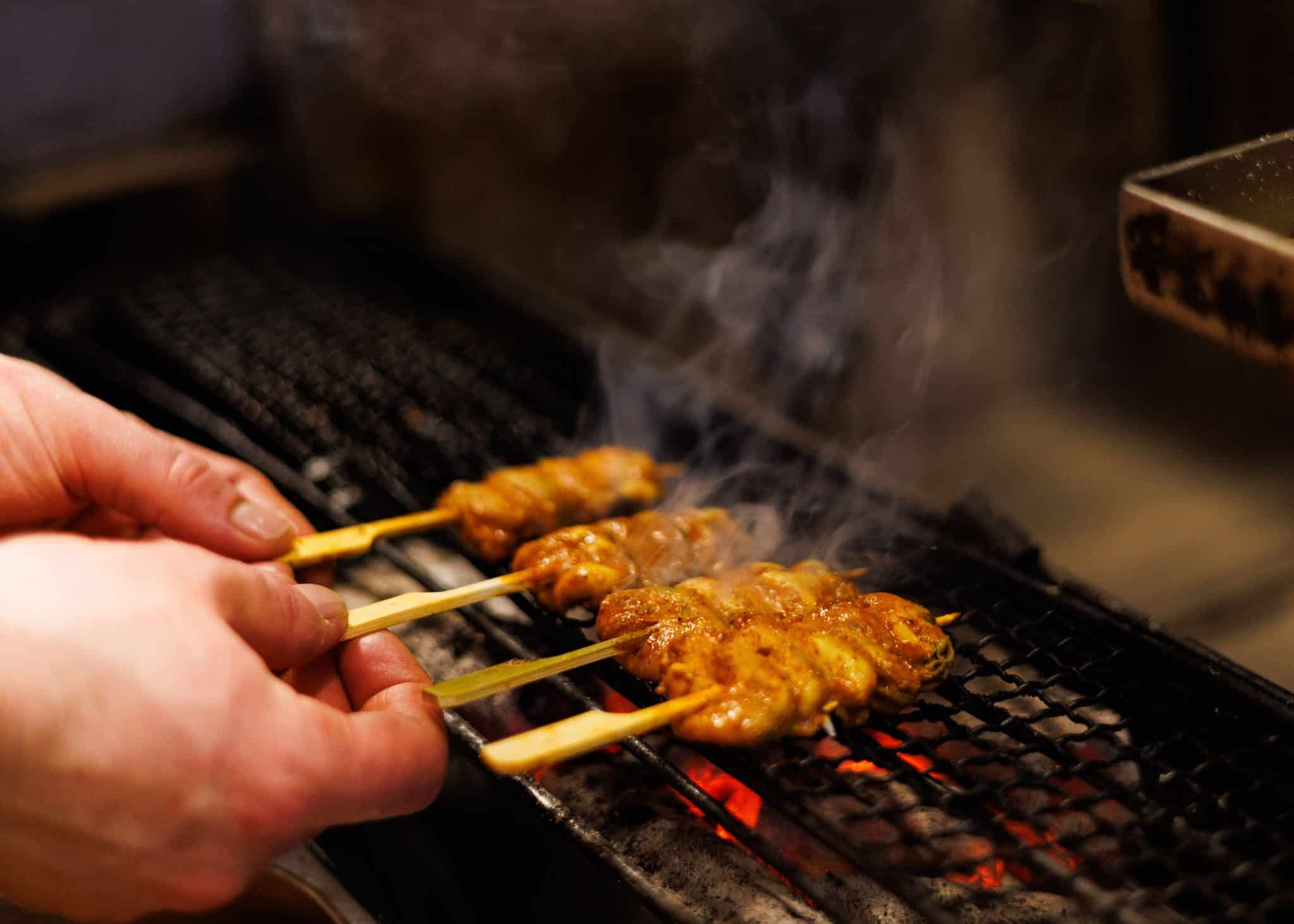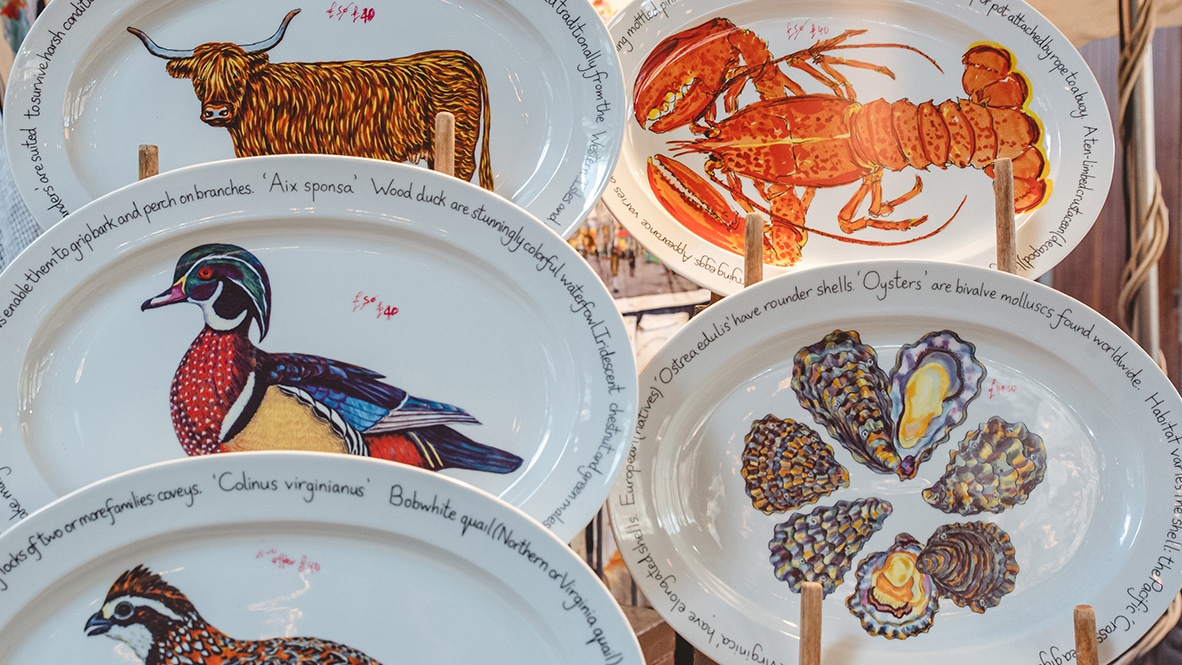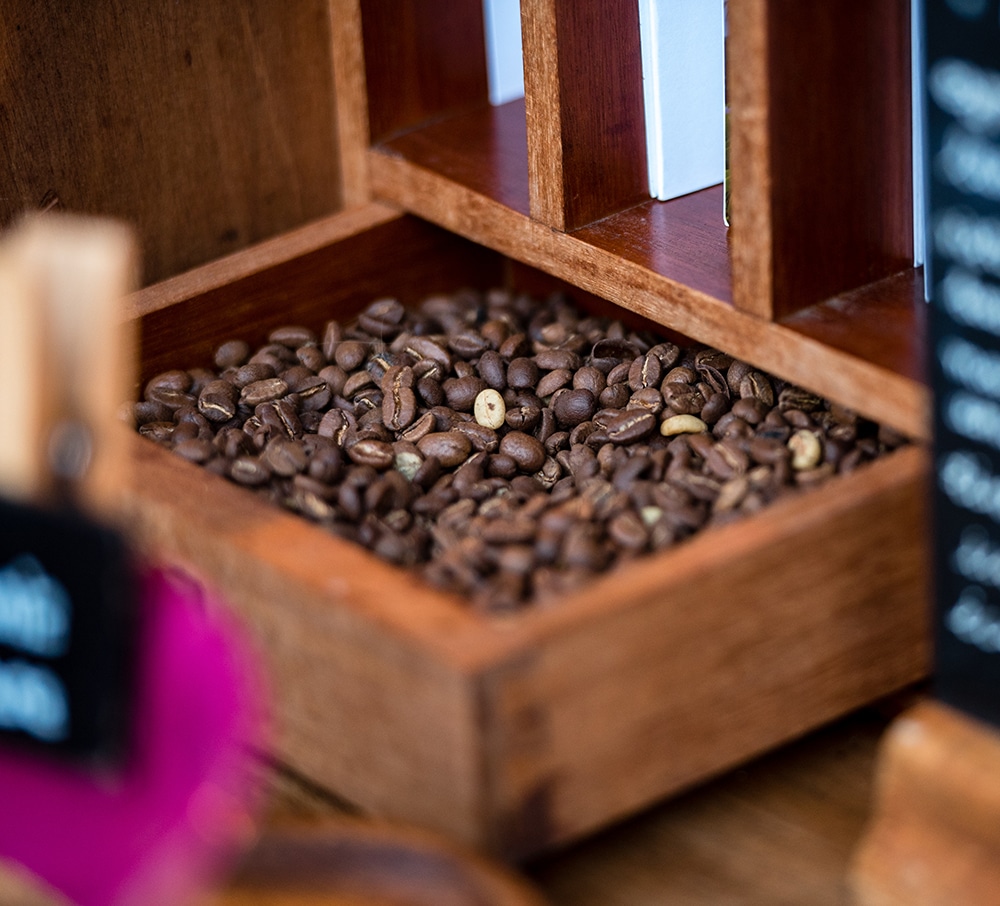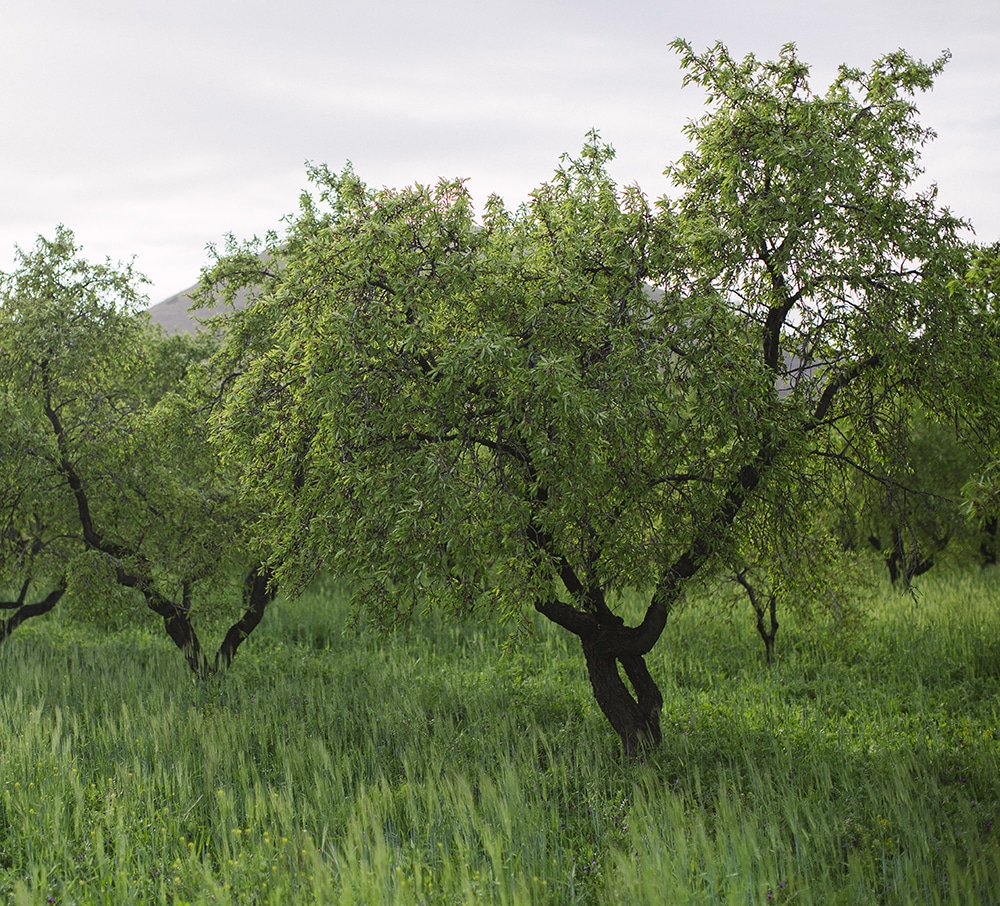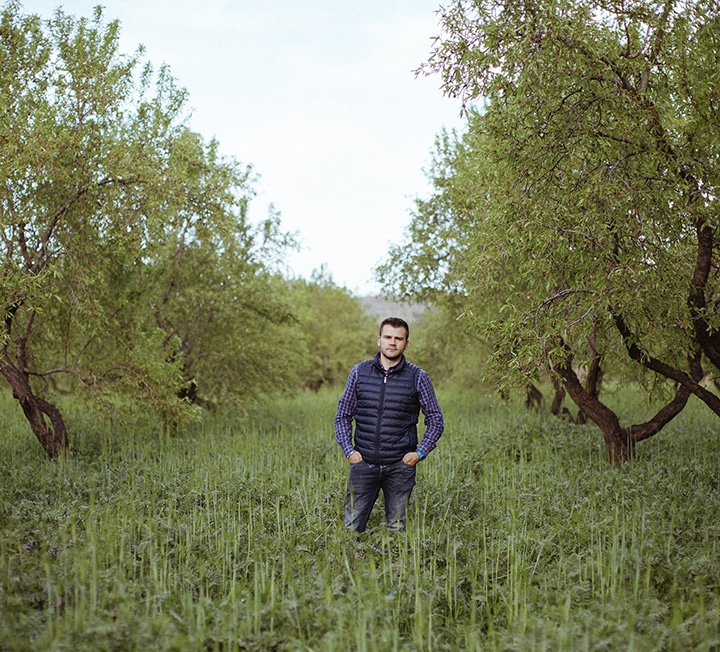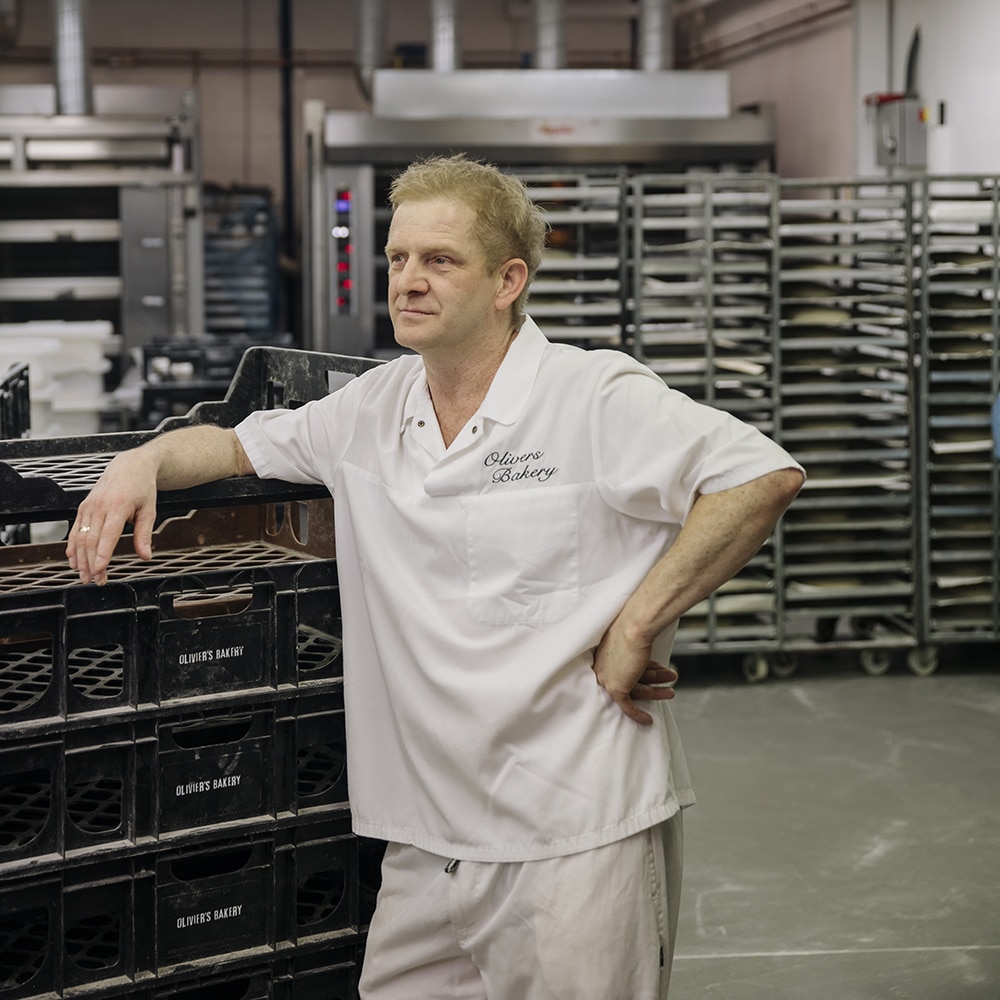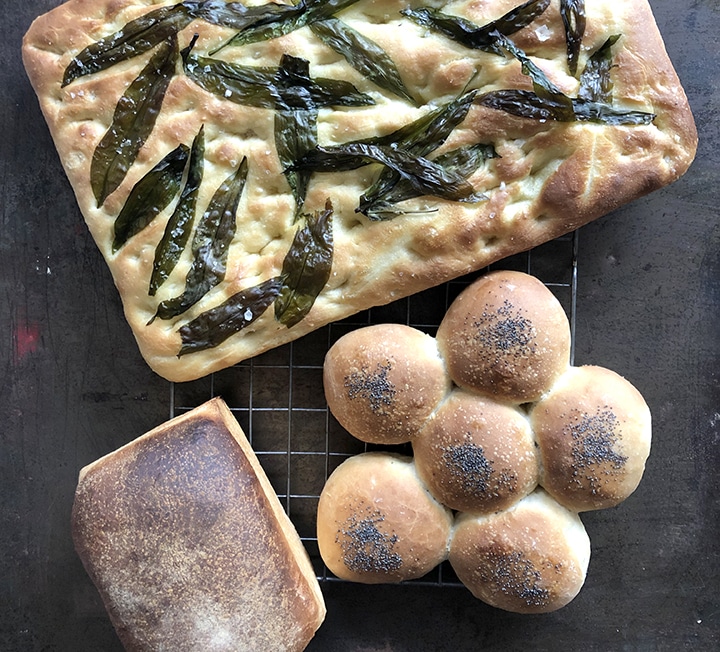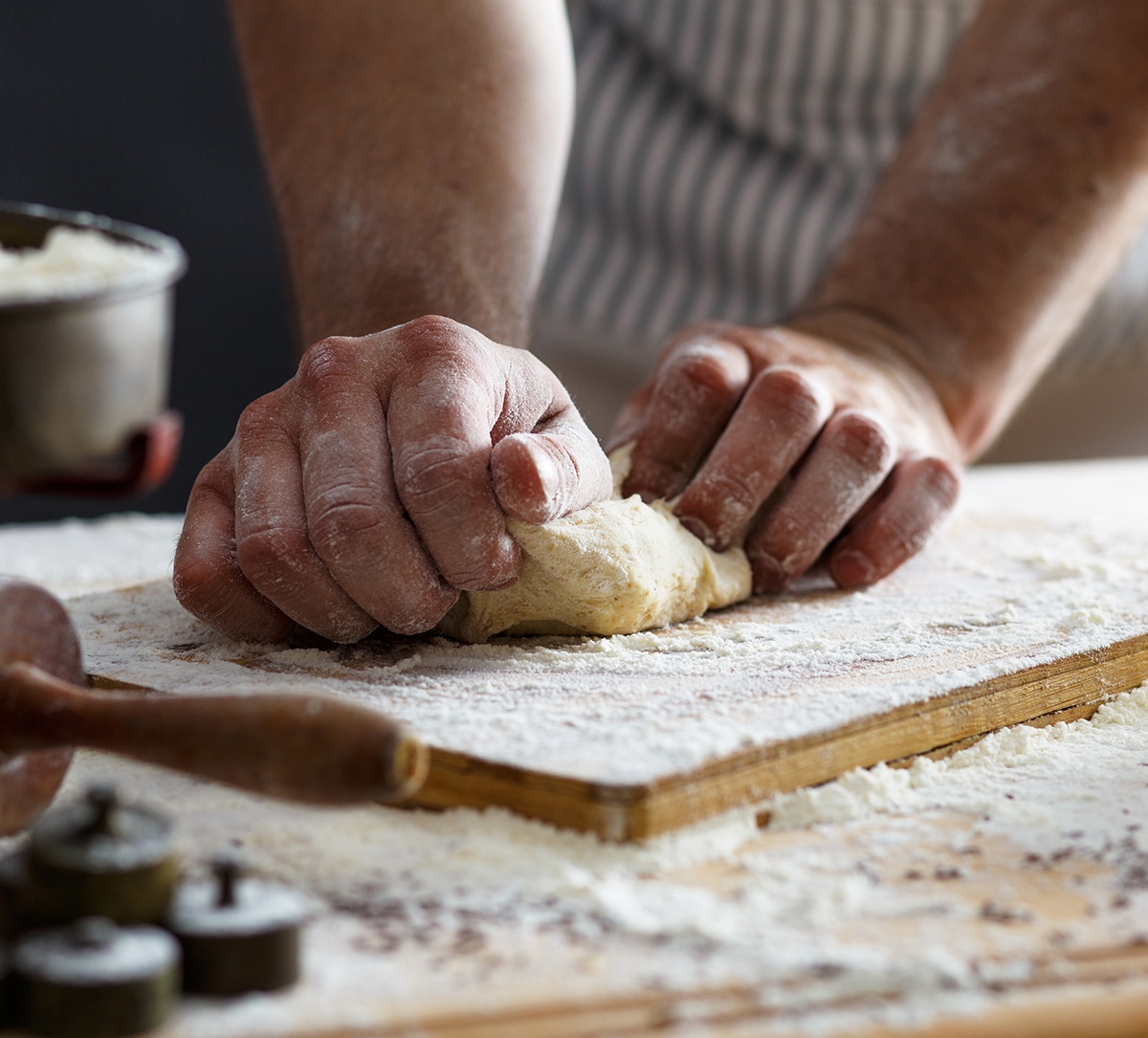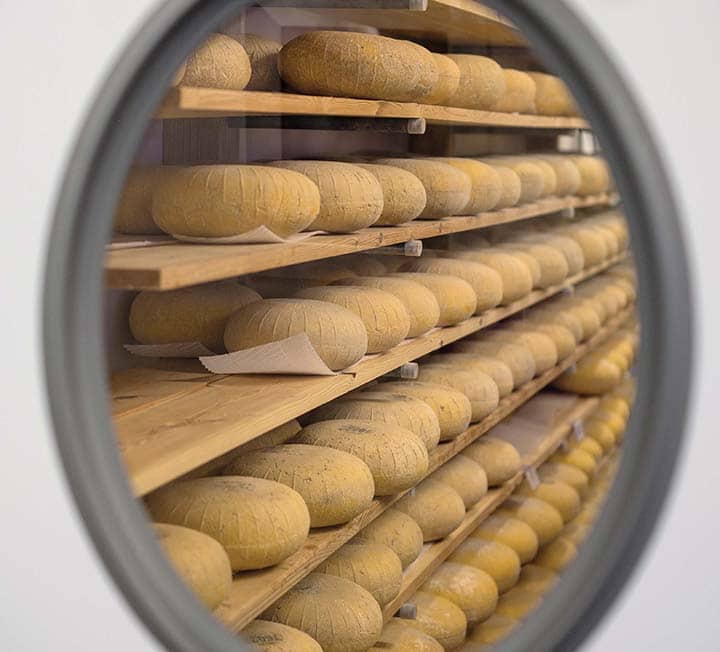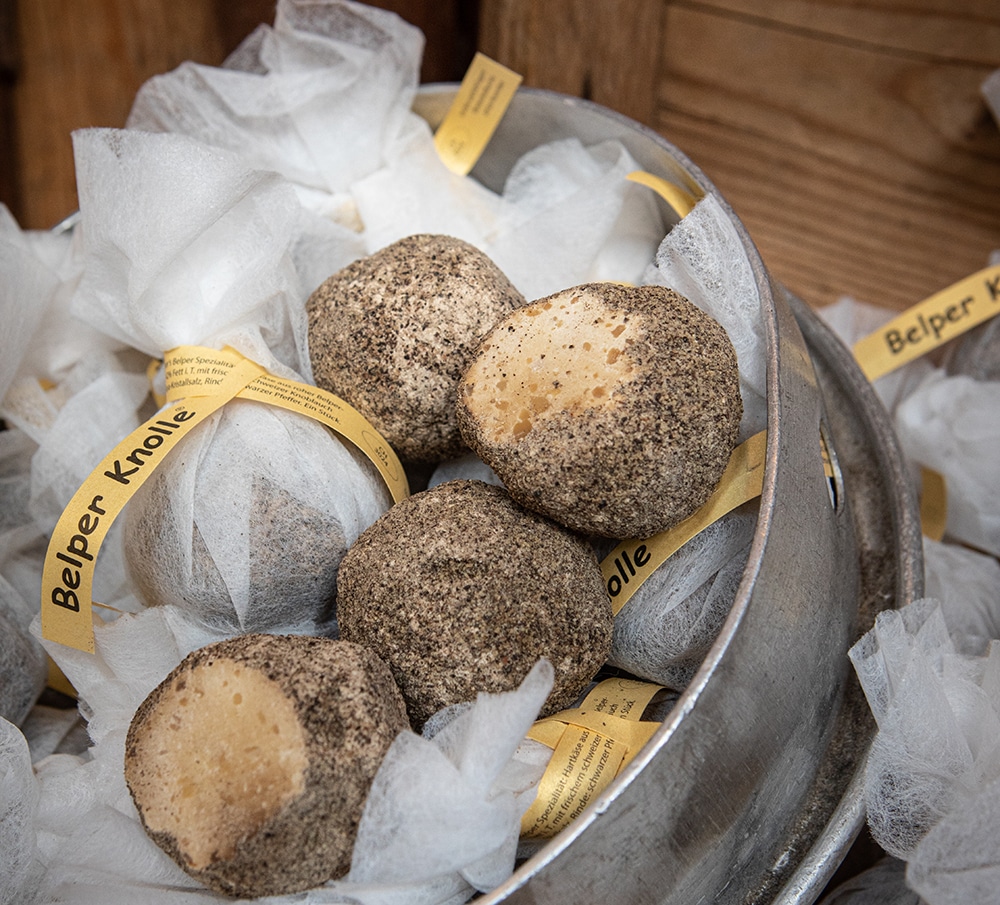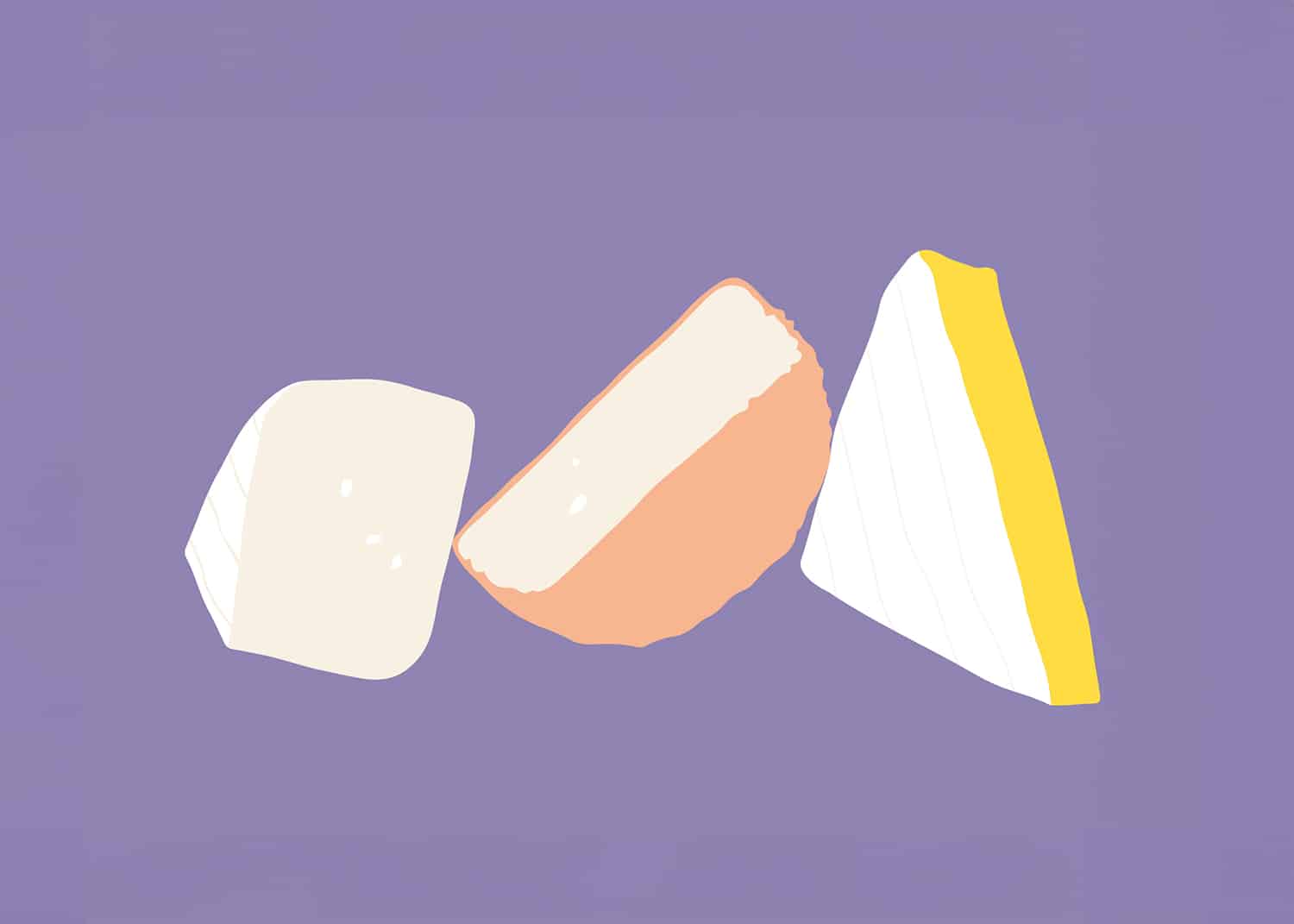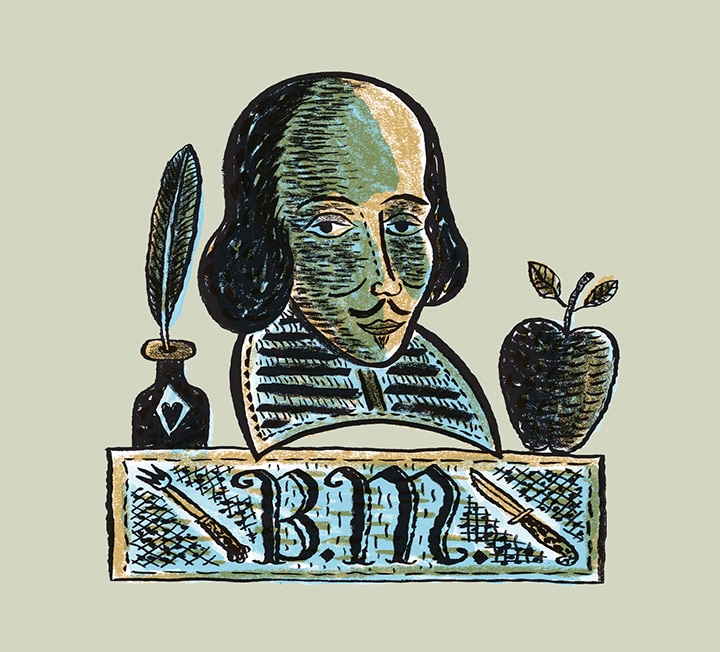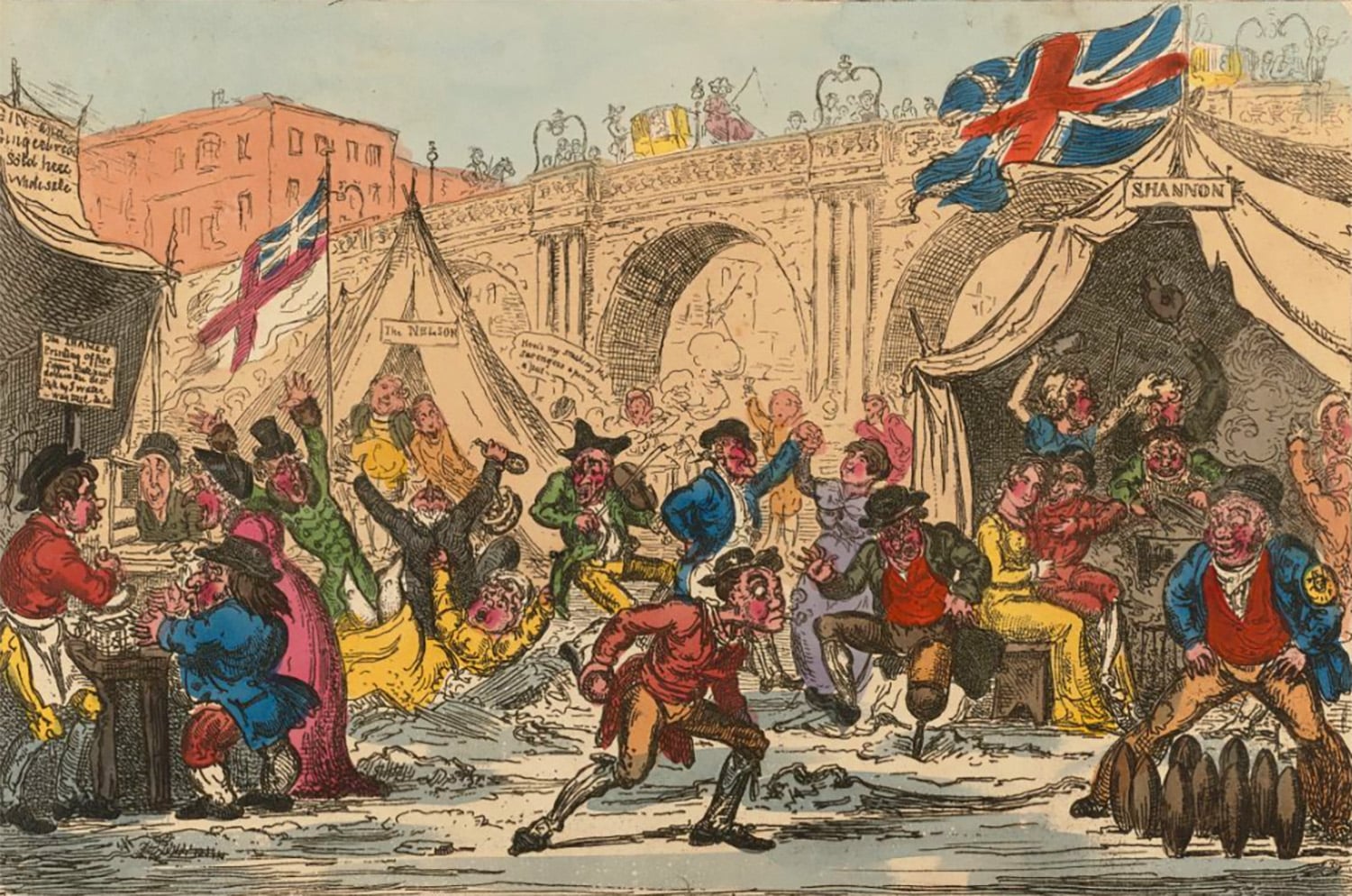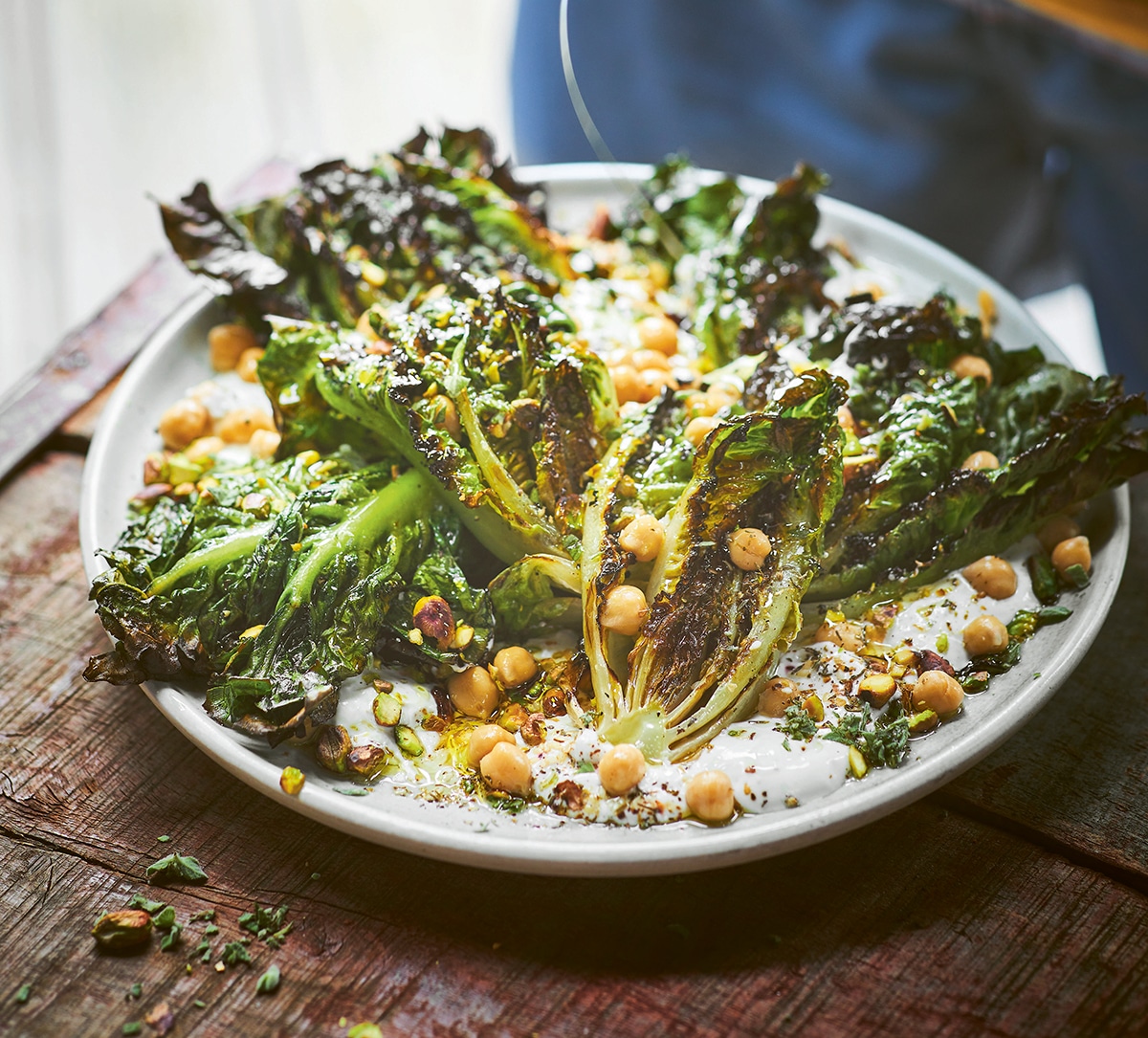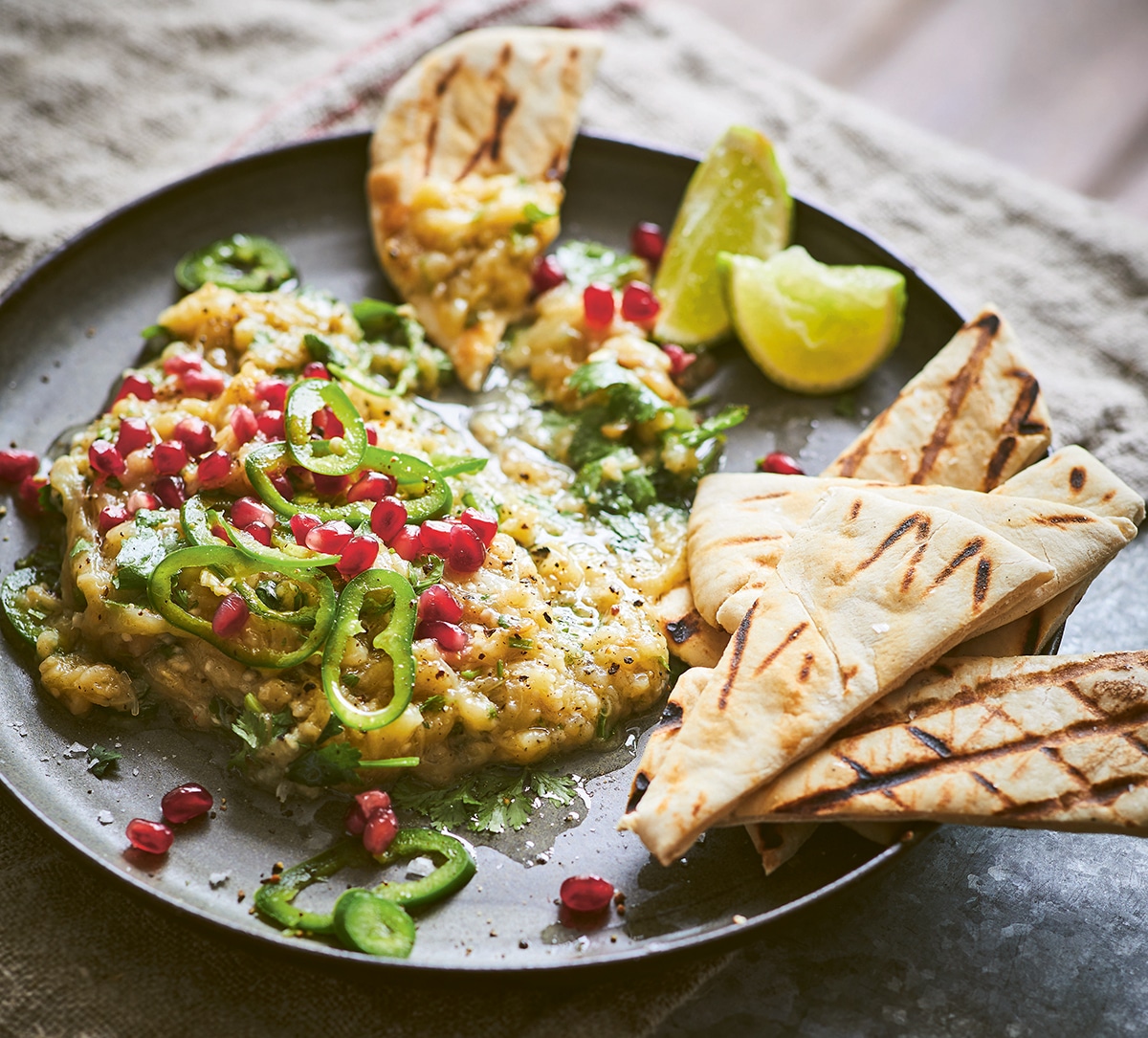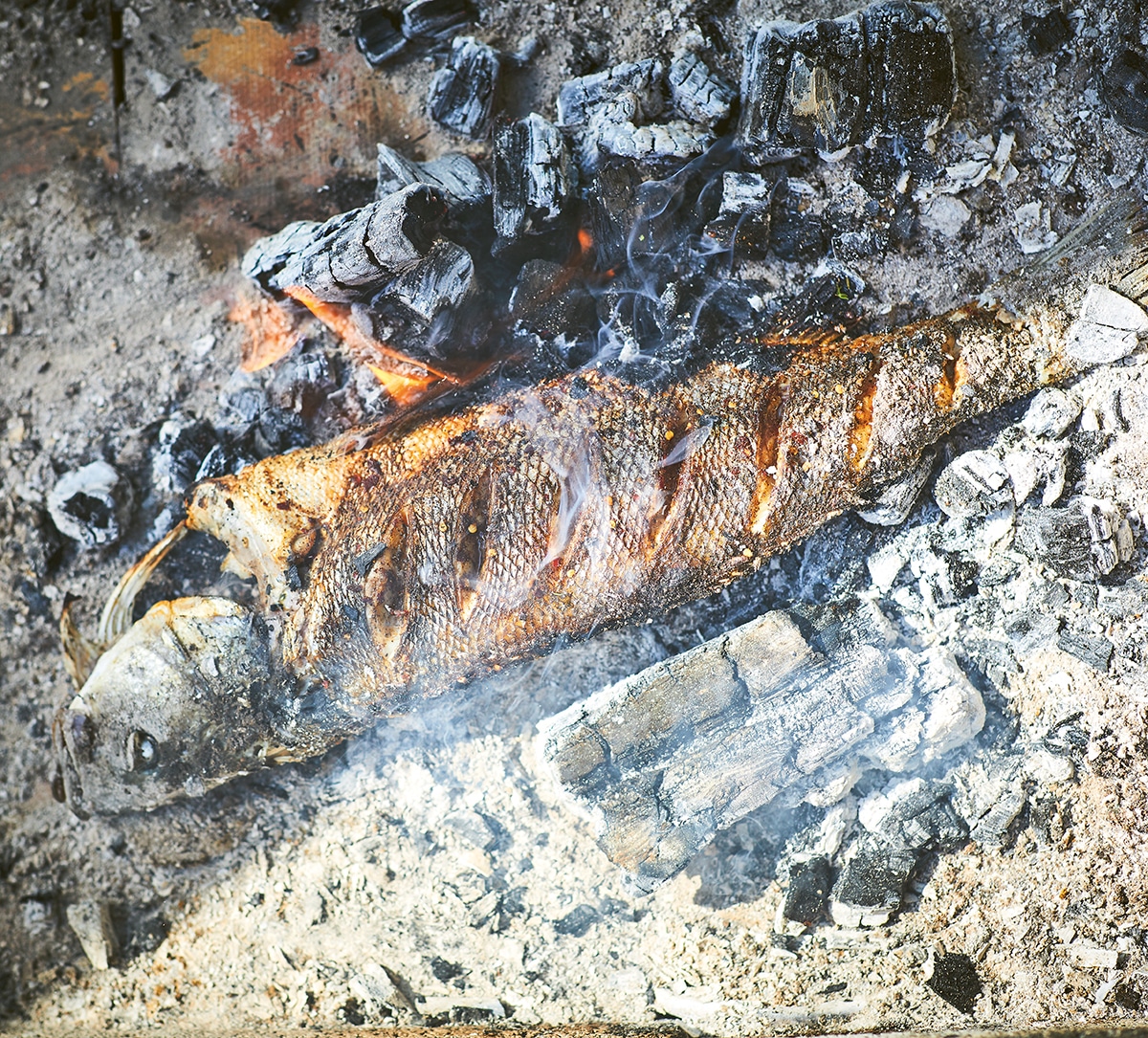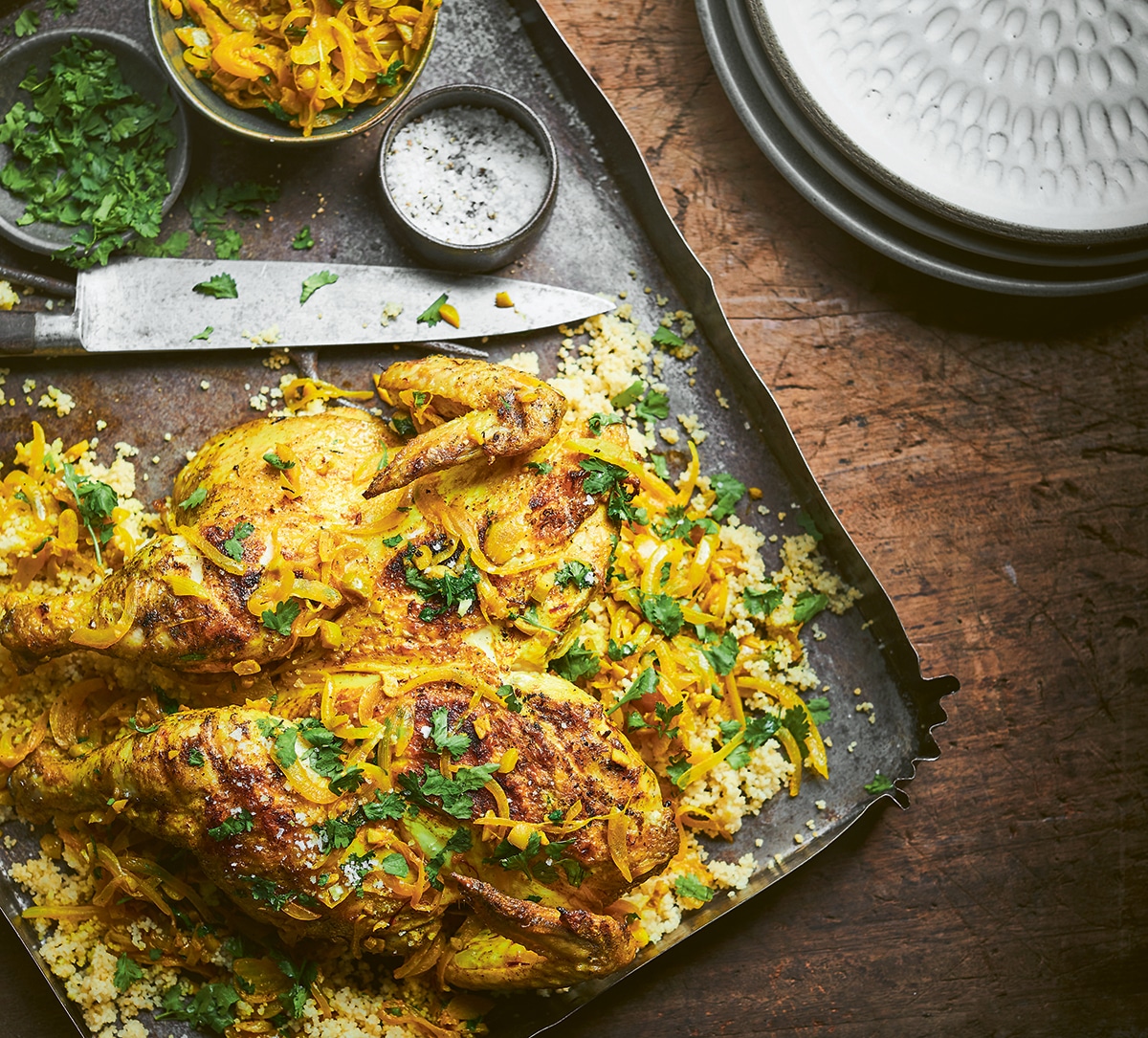Blessed are the cheesemakers: Basajo
Clare Finney tells the story behind a fruity, creamy, sweet wine-soaked cheese from L’Ubriaco Drunk Cheese
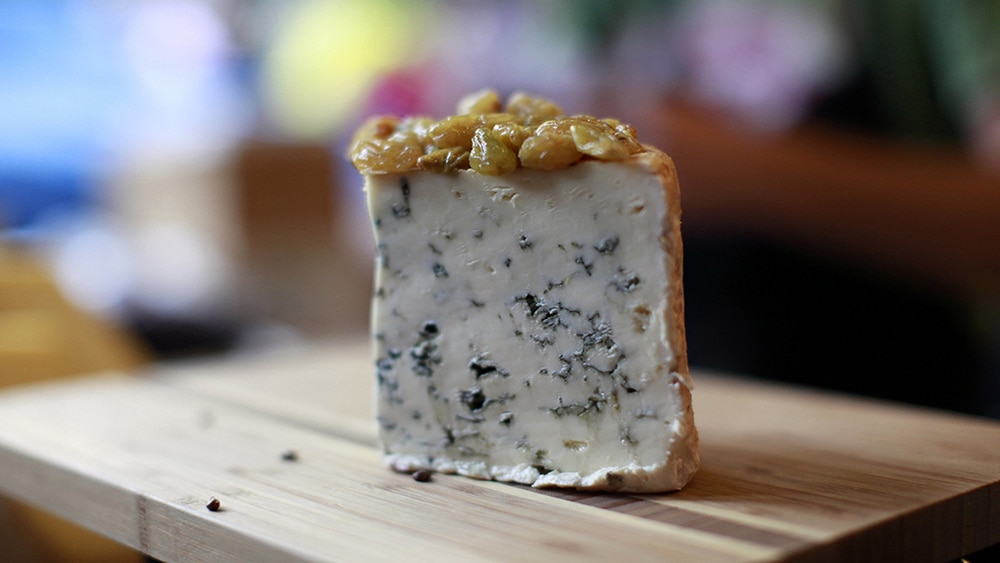

“THE WINE IS A SWEET PASSITO FROM SICILY, MADE WITH GRAPES THAT HAVE BEEN DRIED IN THE SUNSHINE”
1915, Treviso, north Italy: the first year of the Great War – for the Italians, at least – and the first harvest to be subject to requisition by embittered Italian forces. The demands of soldiers for food and shelter are beginning to take their toll.
But there is one thing the villagers are determined the soldiers shall not plunder: the cheese made that year, and still slowly maturing. A peasant, whose name history does not record, had a bright idea. Why not hide it in the wine vats, under the fermenting grapes? Goodness knows what it would do to the taste, but it would be edible and in these times of scarcity, that’s what matters.
“They can take our lardo, but they will never take our cheese!” the peasant may or may not have muttered. Thus began the phenomenon that is L’Ubriaco: drunken cheese.
“They started experimenting,” says Lorenzo on the L’Ubriaco Drunk Cheese stall. We are now of course, in 21st century Borough Market. “Different grapes, different maturation times. Then, in 1976, Antonio Carpenedo set up La Casearia Carpenedo” – the company L’Ubriaco source from.
He’s from a long line of cheesemakers and has produced a few more of them, in the form of children and grandchildren who help out in the business. It is they who are behind the name of today’s cheese, Basajo. “When his niece was very little, she couldn’t pronounce formaggio, the Italian word for cheese, properly,” explains Lorenzo. “She always said Basajo. So Antonio named it for her.”
It is a raw sheep’s milk blue, which makes it sound far more confrontational than it actually is – for as raw blues go, this is an entry-level experience. Those pockmarks of mould may look strident, but their vociferous tendencies have been reined in.
How? Well one of the many, many ideas dreamt up by Antonio with regard to cheese was that of soaking it: not in grapes that were fermenting but in the wine itself, embalming its creamy body and salty veins in a liquid as infinitely rich and varied as cheese can be.
The wine in this case is sweet wine: the precious passito from Sicily made, says Lorenzo, with wine grapes that have been dried in the sunshine. As you can imagine if you have ever tried to press raisins, very little is made.
“It is a very small drink, and very sweet” – hence the strains of honeysuckle, even bubblegum, that run through the cheese, which slides down your throat indeed almost like a liquid. Not for Basajo the crumbliness of its northern counterparts, Stichelton and Danish blue.
“It is sweet, it is fruity and it melts in your mouth,” says Lorenzo. It’s bedecked with wine-soaked raisins and passito grapes from Sicily, but the sheep’s milk is “from his friends around the countryside near Treviso”. It looks beautiful, like the crown of the Faerie Queene. The passito kicks in later. There is a degree of blueness, because “no alcohol enters the cheese. It is on the outside” and the cheese is aged for six months before its wine bath. All the same, it tastes heady, luxurious, and summery. It may be made in northern Italy, but it carries Sicily with it. And that, after the deluge of recent weeks, is just what we need.
Dress to impress: hard cheese
Ed Smith on the Market ingredients that, with minimum effort and maximum effect, can embellish a finished dish. This time: hard cheese
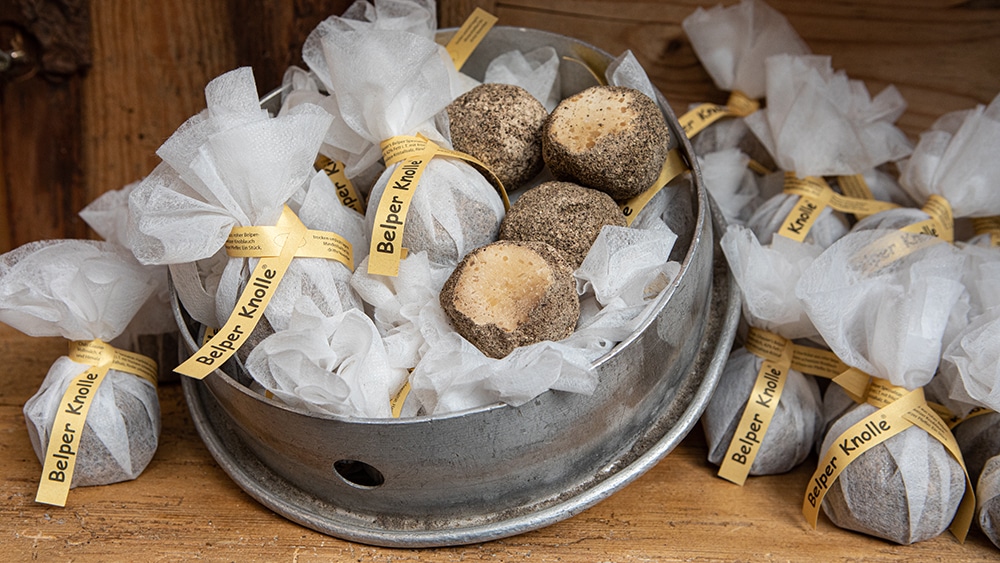

“IN HARD CHEESES, THERE’S GOOD REASON TO SUGGEST THAT HERE WE HAVE THE GREATEST SEASONING OF THEM ALL”
Image: Regula Ysewijn
“Hard cheese, pal.”
I wouldn’t normally advocate turning to or relying on the website urbandictionary.com. But I have to admit, I accidentally stumbled across it (as you do) when typing ‘hard cheese definition’ into Google. Clicking on the top-ranked search link revealed the following: “Tough luck, a shame. Something that’s not very good but you can’t really do much about it. As in: ‘You ran over the neighbour’s puppy, that’s hard cheese.’”
It struck me that, though this absolutely nails the meaning of the phrase ‘hard cheese’, it does hard cheese a real disservice. Hard cheese is not a bad situation, or something that is not good. Hard cheese is amazing. Hard cheese makes pretty much everything better.
By definition, cheeses that are ‘hard’ have been left in a cold room (or cave) to dry out. Over time, they ‘mature’, meaning all sorts of flavours emerge and intensify. Crystals of umami develop (you know, the crunch you get when biting the older varieties of comté on offer at the Market, or the parmesans and cheddars that crumble more than they slice). Hard cheese is the good stuff. Of course, our cheesemongers and affineurs want us to appreciate the subtle complexities of fresh and mild cheeses, too. But it’s hard (pun intended) to step away from a cheese that’s so mature it makes your gums recede.
As ever, the best place for quality cheese is on a cheeseboard. However, from time to time you can and should use specialist, artisan cheeses in your cooking. Because of their calibre, a little tends to go a long way – and in the case of hard cheeses, there’s good reason to suggest that here we have the greatest seasoning of them all. Sweet, salt, sour, fustiness; layers and layers of flavour in a few flakes, crumbs or shavings.
Hard cheeses provide a punchy final flourish for a wide variety of dishes. Any soup – even (especially) fish soup – is better when finished with a snowstorm of cheese. Salads of all types welcome a hit of dairy, which might be a crisp and fresh spring or summer salad topped with shavings of chalky Ticklemore, chopped kale salads finished with finely micro planed pecorino, or autumnal roast squash platters made moreish with crumbs of mature Lancashire.
Even beef appreciates cheese – think of an Italian steak and rocket tagliata and ponder what makes it so good: is it the steak, or the parmesan? Grains and pulses too. Polenta and chickpea flour – whether wet and sloppy or firm in, for example, a panisse – are lifted by cheeses like mature comté. And then, of course, what is a risotto or fresh pasta dish without a heavy dusting of cheese?
With so many cheesemongers at Borough Market, there can’t be a better place to pick up a portion of hard cheese. I’ve mentioned some of the deservedly classic and obvious options, but it’s possible to step beyond those. Paski sir is a salty, strongly flavoured sheep’s cheese from the island of Pag in the Adriatic Sea, stocked by Taste Croatia. It’s really, truly complex and long lasting, perfect for those occasions when you might otherwise have been thinking of pecorino. At Jumi Cheese, from the Emmental region of Switzerland, there’s something called Cironé – a mature cow’s milk cheese with many of the qualities you’d expect in a good parmesan – the tang, the long-lasting richness, the umami crunch.
You may already know Jumi’s Belper Knolle: a stone-shaped ball which, even in ‘fresh’ form, is hard and chalky, but also sharp, salty, and deceptively creamy. It needs to be sliced very finely, with a mandolin or indeed the truffle-style slicer Jumi sells, and even the lightest curl adds so much – not just a dairy tang, but also the undertone (or is it top note?) of garlic and a touch of fire from the black pepper dusting. Excellent with salads (particularly tomato), pasta, meat… might this be the ultimate embellisher?
So, off I head to Urban Dictionary to update it with my own definition: “Hard cheese: a very good thing.”
Living life to the full
To mark Living Wage Week, Jon Thrupp of Mons Cheesemongers, an accredited Living Wage Employer, explains why committing to a decent level of pay benefits businesses as well as their staff
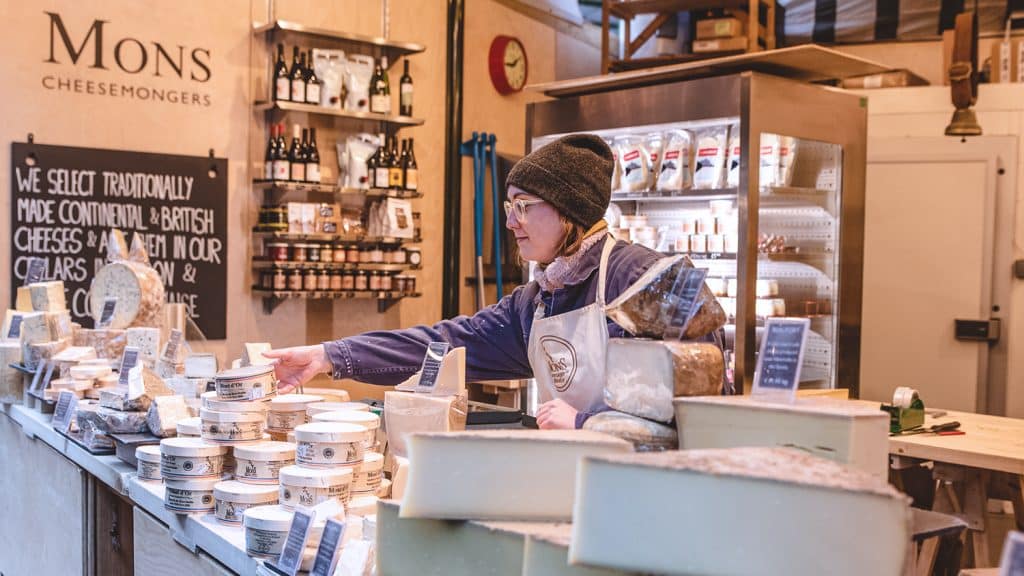

“‘LIVING’, IN THIS CASE, IS ABOUT MORE THAN JUST SURVIVING. IT’S ABOUT HAVING ENOUGH TO ENJOY A DECENT LIFE”
Words: Mark Riddaway / Images: Sim Canetty-Clarke, Issy Croker, RED Agency
All roads lead to London, or so the saying goes. But in recent years, with the cost of living spiralling and wages stagnating, the direction of travel along those highways appears to have reversed.
“This city is becoming a black hole,” says Jon Thrupp of Mons Cheesemongers. “People are thinking: ‘I couldn’t possibly dream of buying a house here. I couldn’t set up my family here. I could do that in Bristol or Brighton. I could go to Scotland. I’d rather be in Leeds than spend half of the money I earn on rent and have no chance of ever getting a mortgage.’ We’re a London-based company, so that’s such a big pressure for us.”
Jon’s business involves sourcing fine cheeses from continental Europe and the UK, maturing them in Mons’s cellars, then selling them through shops, market stalls and a wholesale business. It’s skilled work – the selection, the ageing, the cutting, the serving – so the business is reliant upon having talented people willing to do it. The good news for him is that plenty of potential employees would love to spend their days tending to the world’s best cheeses and sharing their knowledge and passion with customers. The bad news is that, in a city as expensive as this one, love alone is not enough. “You can’t talk to your landlord and say: ‘Can I pay some of my rent with my passion?” says Jon.

That’s why Mons Cheesemongers (like Borough Market itself, which signed up in 2016) decided to become an accredited Living Wage Employer. What this means is that Jon has committed to paying every member of his team more than the hourly wage set each year by the Living Wage Foundation.
As the name suggests, this charitable organisation’s mission is to secure for workers a level of pay that meets their essential needs and rises in line with the cost of those essentials. Living, in this case, is about more than just surviving. “It’s about making sure people have enough to enjoy a decent life,” says Elise Craig, who runs the Living Wage Foundation’s south London programmes. “That means covering all the basics but also engaging in a cultural life and social activities.”
The rates are updated each year to cover the cost of a ‘basket’ of goods and services that, based on a regular series of public surveys run by Loughborough University, are considered necessary for a person to live with dignity. As well as having a roof over your head and food in the fridge, that might include an annual holiday, the occasional trip to the cinema, a birthday celebration. Nothing truly decadent, but enough for a happy, fulfilling life.
The Living Wage Foundation’s current rates are £13.15 per hour in London and £12 across the rest of the UK. By comparison, the current National Living Wage (the misleadingly named wage that employers are required by law to pay to workers over the age of 23, the calculation of which is entirely unrelated to the actual cost of living) is currently only £10.42, regardless of where you live.
There are clear moral and reputational reasons for wanting to pay your staff properly. But Jon is very clear that, if you’re a business owner, seeking Living Wage Employer accreditation is not something you should do just because you want, in his words, to “seem like an honourable person when you’re in the pub, chatting about your business over a craft beer”. It’s something you should do because you want your business to thrive – and because you want London to be a viable base for cheese maturing caves as well as hedge funds.
According to Elise, the data collected by the Living Wage Foundation is unequivocal about the benefits accrued by employers: “People stay in their roles longer, and those increased retention rates mean lower costs on recruitment and training. We see better relationships between staff and management. It’s good for organisational morale, and it’s also a cost-saving exercise in the long term.”
For Jon, the primary benefit has been his ability to draw from the shrinking pool of talented people who want to start a career in the artisan food world and haven’t already fled London for Scotland or Leeds. “The accreditation is a really valuable tool for potential employees to understand,” he explains. “They’re like: ‘I know what its concept is and what it’s there for, and if I can see it on the job description, it makes sense to me.’ The Living Wage as a brand speaks more clearly and more immediately than an interview where we describe the contract, the work, how people progress. It gives that sense of certitude.” As well as being paid properly today, employees want to know that they’ll continue to be paid properly tomorrow, allowing them to make plans and put down roots. That certainty is what the accreditation provides.
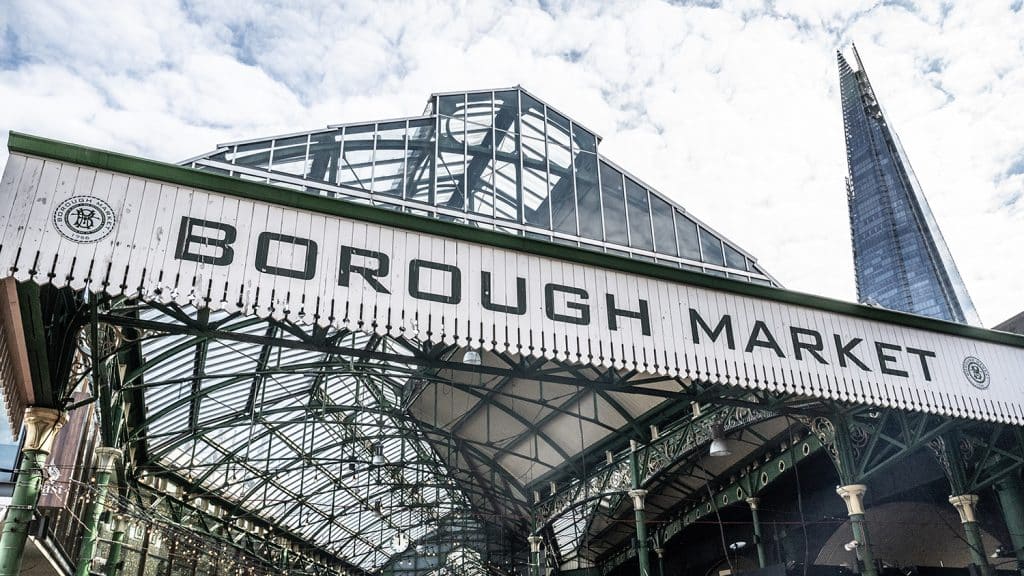
For any big company, not paying the London Living Wage is pretty much indefensible. For small businesses like Borough’s traders, there are some understandable reservations. As Jon says, most market traders “are product based and have 50 per cent – if not more – of their turnover spent on actually procuring and transporting the goods.” Right now, with those core costs raging out of control, committing to annual pay rises determined by a third party involves a significant leap of faith. As Elise explains, “because of inflation, there’s been a big uplift in the rate over the past couple of years”. Jon, though, has no regrets.
His biggest concern had been the knowledge that investment in staff isn’t always repaid in kind. Training and mentoring inexperienced people involves a significant cost, particularly in an industry as heavily regulated as food. “The responsibilities from day one are quite mega, so the doubling up of staff is unavoidable,” says Jon. “Eventually, maybe after three months, you get to a position where you’re working responsibly through your day, without needing supervision and intervention from others.” The worry is that new staff will come in, cost a small fortune in pay and support, then decide on a whim that the job’s not for them.
To ease this burden, the Living Wage accreditation allows for a lower rate to be paid to trainees for the first eight weeks. “Eight weeks into the training, we move them to the full London Living Wage and it’s fine, there are no issues. By that stage, the commitment is there. If there are going to be problems, they tend to rear their head in the earlier weeks.” The reality, says Jon, is that having that guarantee of a pay uplift goes a long way towards securing genuine buy-in from trainees.
As is true of all small businesses, rising costs have forced Mons to look for efficiencies and innovations – securing euros in advance, for example, to avoid being stung by fluctuating exchange rates. It’s just that those ‘efficiencies’ don’t include underpaying people. The halo effect of this is seen by the staff, by customers who know that the money they hand over is being equitably distributed, and by the business itself, which continues to thrive. “We have to think about the future,” says Jon. “We’re either working towards something that steadily improves or we’re allowing it to steadily decline. If we want to survive, the question for us is: can we actually entice a young, passionate generation to work with us?”
Anyone who’s been served by the young, passionate generation at Jon’s Borough Market stand will know that – thanks in part to the financial security his business has promised – the answer right now is yes.
Q&A: Mark Dobbie & Andy Oliver of Kolae
The friends behind Borough’s new Kolae restaurant on southern Thai cuisine, cooking over fire and the joys of working beside a market
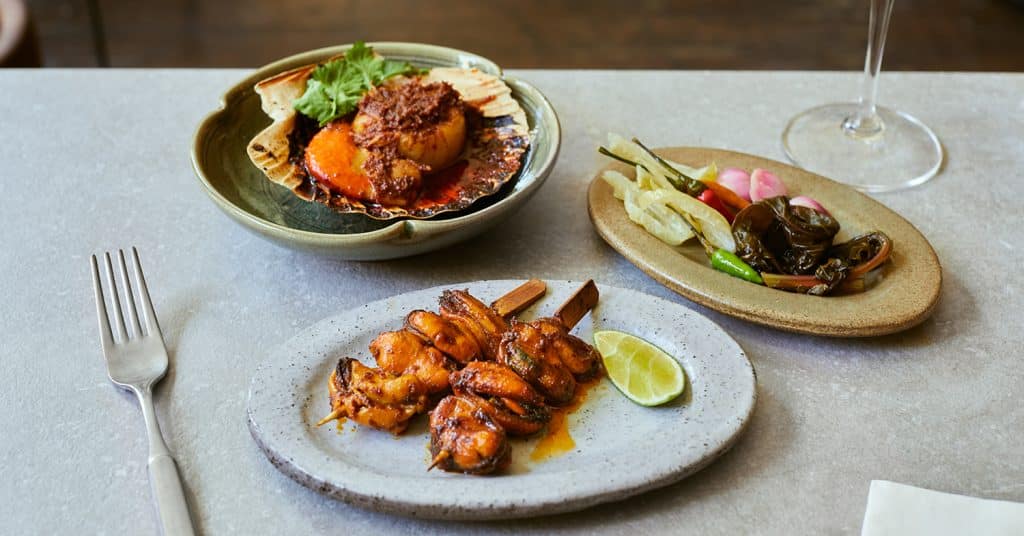

“WHAT WE TRY TO REMIND PEOPLE IS THAT THAI FOOD IS BROAD AND DIVERSE AND HAS SO MANY DIFFERENT INFLUENCES”
Interview: Mark Riddaway / Images: Harriet Langford, Ben Broomfield
Despite being Australian and British respectively, chefs Mark Dobbie and Andy Oliver have become impassioned, fast-talking evangelists for the food of a very different country: Thailand. After falling head over heels in love with this most diverse and characterful of cuisines, they’ve devoted their lives to exploring its incredible depth, first through their Som Saa restaurant in east London and now through Borough Market’s latest arrival, Kolae, which opened on Park Street in October.
Mark learnt his craft at Nahm, the legendary restaurant run by his fellow Australian David Thompson, the first chef in Britain to win a Michelin star for Thai cooking. Andy, who abandoned an office job to gamble on a career in cooking, arrived at Nahm to complete a ‘stage’ (an internship, essentially) after a successful stint on MasterChef. After bonding over curry pastes, the pair began working on Thai cookery projects outside of the day job, including a pop up at Nuno Mendes’s highly influential Loft Project. After Nahm closed in 2012, Mark headed to America to work at Pok Pok and Andy spent a couple of years in Bangkok working at Bo.lan. On their return to London, the friends joined forces again to open Som Saa, initially as a year-long residency at Climpson’s Arch in London Fields, then, after a successful crowdfunding campaign, as a permanent restaurant in Spitalfields.
Days before Kolae’s opening, with the sound of building work clanging in the background, Mark and Andy sat down with us to explain the concept behind their new restaurant.

First things first, what’s the correct pronunciation of your new restaurant’s name?
Mark: I think we’ll be explaining this a lot over the years! When you translate from Thai script to the English alphabet, the sounds don’t line up perfectly – it’s never quite phonetically accurate. The name is pronounced somewhere between ‘Gol-ay’ and ‘Kol-ay’ – the sound is between a G and a K, basically. We like the way it looks with a K, so we went down that route.
So, what is kolae?
Andy: It’s a dish associated with the far south of Thailand. It’s incredibly delicious but not really known outside of Thailand. It’s based on coconut curry sauces – almost like a cousin of satay, but a bit more complex. The protein is dipped in the curry sauce and then repeatedly basted with it as it’s grilled. There’s lots of variety out there in the sauce, the technique and the proteins that are used. It’s most commonly chicken but it can be seafood – whole bits of fish or shellfish – and, particularly in southern Thai Muslim communities, meats like goat or mutton. Some of the sauces have lots of spices in them, making them almost Indian or Persian in their inflection. And others have no dried spice – it’s more like a classic Thai curry paste with lots of black pepper and lemongrass. It’s a whole family of dishes, and we’re going to be exploring it fully.
You’re cooking these kolae dishes over fire. Is that an important part of the concept?
Andy: Fire is what forms the heart of so many Thai flavours and dishes. Even dishes that you wouldn’t think have grilled things in, do in fact have grilled things in – often in the curry paste. At Som Saa, we’ve always cooked over wood and charcoal but we’re now putting the fire a bit more front and centre, almost building the menu around the grill. At Kolae, we’re pressing fresh coconut cream in the kitchen, and the leftovers – they’re almost like used coffee grounds – are a perfect smoking medium on the grill, so we’re using a combination of charcoal, wood and coconut.
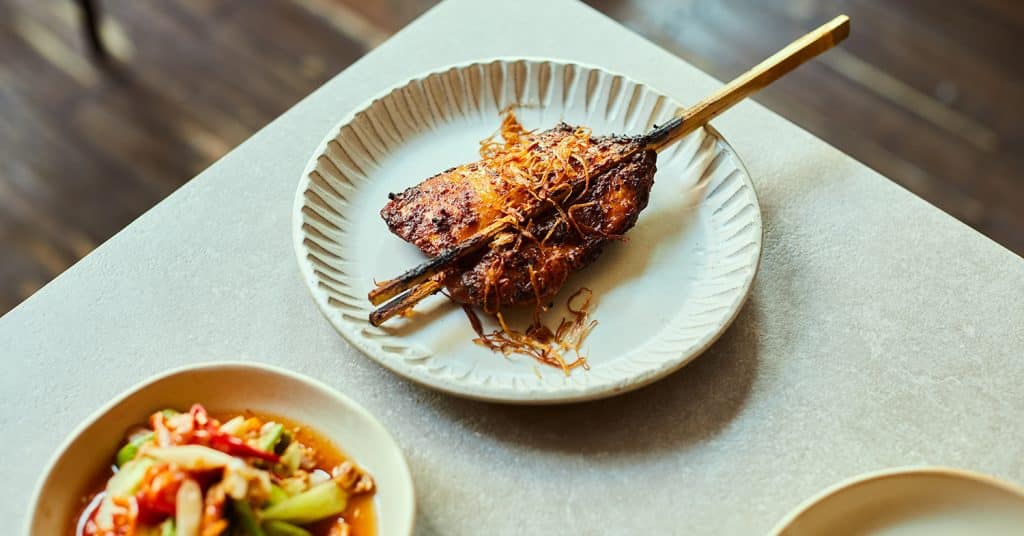
Of all the cuisines in the world, what is it about Thai that fascinates you so much?
Mark: I think, for me personally, it’s a thirst for knowledge. There are so many facets to Thai food. They’ve had relatively open borders throughout their history, so there are all these influences from trade and migration, and every region is different as a result. Learning about the history and culture is something that can keep you engaged for a long time, and the food is so tied into all that. In Britain and Australia, we enjoy our food, but I’m not sure we have quite the same cultural connection to it that the Thai people do.
High street Thai restaurants in this country have tended to dampen down some of the cuisine’s more intense flavours so as not to alarm the British palate. What’s your approach?
Andy: I think our first port of call is always to represent Thai food as you would find it in Thailand. There are certain dishes that aren’t truly themselves if you change them too much. Some Thai dishes are notorious for having really big chilli heat as part of their foundation, and if you start reducing the amount of chilli, you’re altering the whole thing. What we try to remind people is that Thai food is broad and diverse and has so many different influences. Some of the traditions don’t have a spicy palate at all. There’s big Chinese influence, and chilli isn’t part of that. A lot of the Muslim food is not super-spicy. A lot of the Peranakan food in the south is not super-spicy. Our preference is to guide people towards ordering those dishes, rather than changing dishes that come with very intense flavours. Those intense flavours are the heart and soul of the dish.
Mark: There’s a big responsibility on front-of-house to help guide people. If someone comes in and orders a dish that’s full of fresh green peppercorns and little green chillis, and they don’t really feel like much rice, they’re going to blow their face off. If one of our team is able to help explain that kolae, for example, isn’t super-spicy, and you should maybe have that with some of the spicy things on the side, and some of the tart salads, you end up getting a balanced meal while also enjoying Thai food from a different perspective.
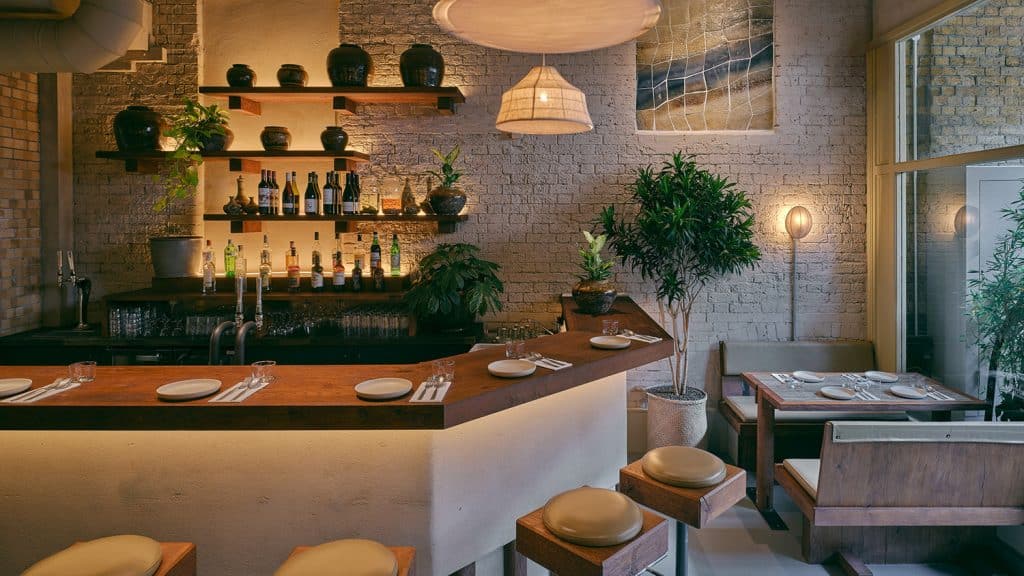
In many of the dishes, you’re using seasonal British ingredients that wouldn’t be found in Thailand. How does that fit into your ethos?
Mark: Good produce is just something that excites us. When you get good produce in, you want to use it. Knowing a bit of the cultural background, the history of dishes, you start to understand how a bitter herb in Thailand can also be represented by a bitter leaf grown in the UK, and can fit perfectly into that slot in the dish. You’re still being respectful to where that food’s come from, but also being conscious of your own footprint. Also, buying ingredients from our doorstep means we can support farmers who we know are doing things from a position of passion rather than profitability. That all flows back through into the dish. It’s about finding a balance between a dish being as it would be in Thailand, and using the best quality ingredients that we can, produced by people whose ethos chimes with ours.
What’s it like having a produce market right beside your restaurant?
Andy: We’re incredibly excited to be running a restaurant here. It’s an emotional thing, walking in here to work every day. On a personal note, markets are very special to me. A good food market is a happy place for anyone interested in food. Borough Market is somewhere that, 20 years ago, became the centre of the universe as far as I was concerned: seeing produce I’d never seen before, shopping for things I’d never cooked before. In Thailand, as well, markets are everything. Getting up early in the morning and being in a market as it’s getting going is like entering a whole different world. It’s not just about food, it’s as much about people as well. I love the idea of being part of a community – a community of traders, restaurants, shoppers. We feel very privileged to be here.
A few ways with pumpkin and squash
In an extract from Borough Market: The Knowledge, Angela Clutton explores the rich culinary potential of this diverse family of vegetables
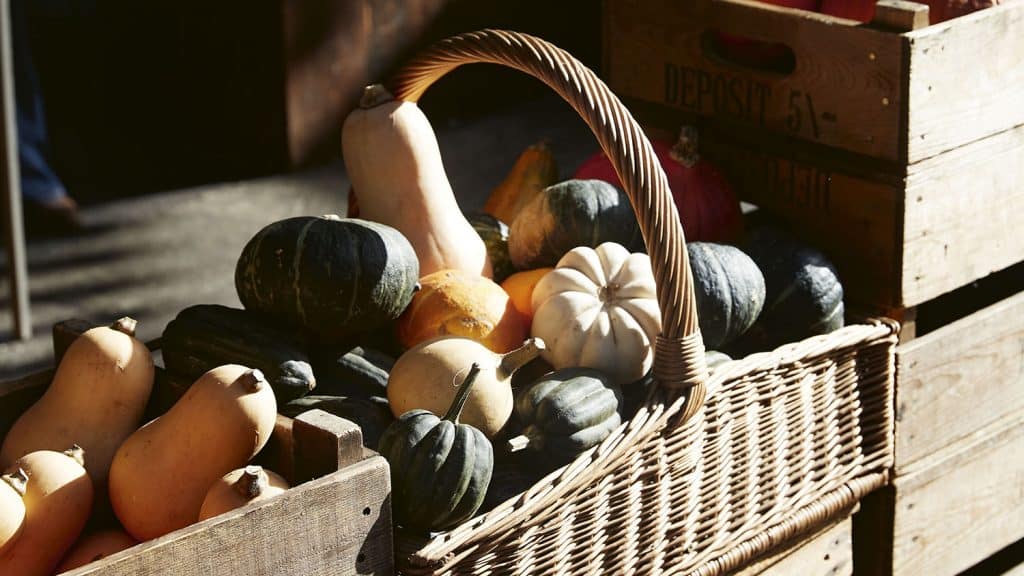

ROASTING PUMPKIN OR SQUASH PROTECTS AND DEVELOPS THE INHERENT FLAVOUR, OPENING UP A WORLD OF CULINARY OPPORTUNITY
Words: Angela Clutton / Image: Kim Lightbody
Every autumn and winter brings the sheer joy of seeing all the pumpkins and other squashes displayed across the Market stalls – so many different shapes, colours and sizes – and seemingly endless ways they can be used in all kinds of cooking.
Shop
The ripest pumpkins and squashes will give a hollow sound when tapped. Stored in a cool, dark place, they can keep for months, should you want to. Different varieties come with different flavours and textures, and the following are particularly wonderful to cook with:
Acorn squash
Unsurprisingly, shaped like an acorn, with dark green ridges that, when sliced into, give a scalloped-edge appearance. Its flesh is a beautiful yellow with a mild, nutty flavour, but a little watery, so not the best for grating. Instead, it’s ideal for soups or sauteing.
Crown prince
These absolute beauties have a pale blue-green skin that’s so thick it can be hard to cut into, so take care. Once in, prepare to be stunned by the vivid beauty of its deep orange flesh that holds its shape well on cooking. Great for roasting. They store well too.
Harlequin squash
This one looks a bit like an acorn squash, but this time with speckled creamy green skin. Its watery flesh means it can disintegrate on roasting or grating. Best for soups or sauteing.
Onion squash
A small, teardrop-shaped squash that’s bright orange inside and out. It has a nutty flavour, is a little less sweet than others, and may not keep well for quite so long. Great for roasting.
Turban squash
Looks like a small stripy squash on top of a larger one. Its pale yellow flesh is, again, a little watery, and is better for soups than grating or mashing.
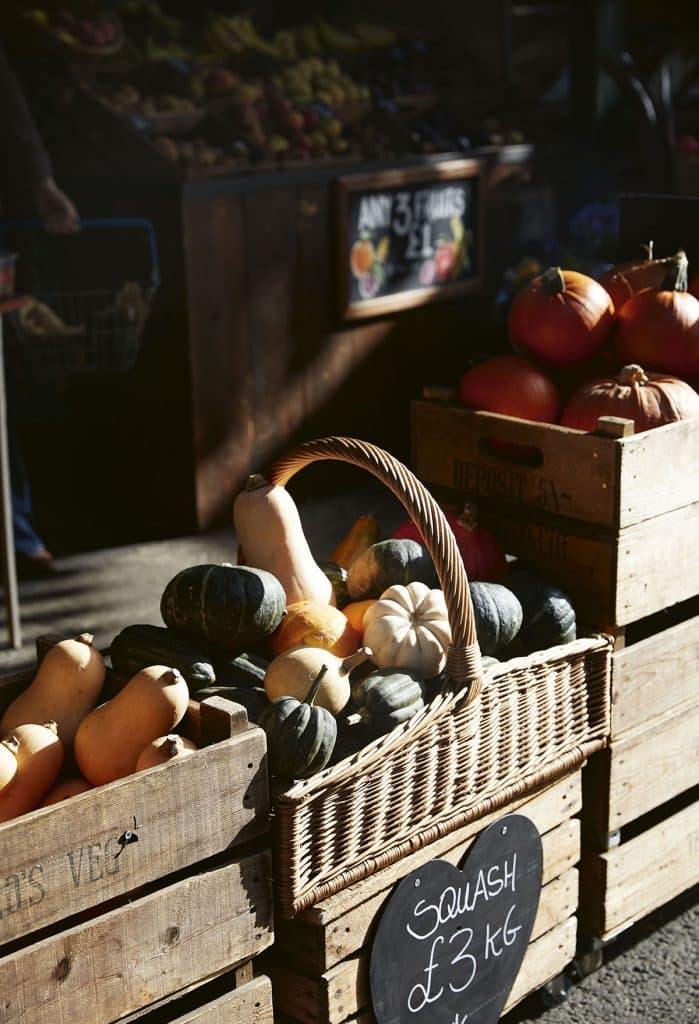
Roast
Roasting hollowed-out, sliced or chopped pumpkin or squash – particularly a crown prince – is very probably the very best thing you can do with it. It protects and develops the inherent flavour, opening up a world of culinary opportunity for what you can do with it once cooked.
Slice open and remove the stringy insides and the seeds. Don’t throw away the seeds – below.
Remove the skin if you want to for the final dish, but keeping it on helps with flavour and it’s easier to remove the skin after cooking.
Slice or chop, add to a roasting tin, then toss in oil or ghee along with spices and aromatics of your choosing – rosemary, sage, oregano, za’atar, cumin, paprika, cinnamon, caraway, etc – and a splash of balsamic or sherry vinegar.
Roast in a hot oven at 220-230C for 20-40 minutes, depending on the variety and the sizes you are roasting. (If you do remove the skin before cooking, keep it to make pumpkin-peel crisps: just toss the peels in oil and salt and roast in a very hot oven until crisped.)
Then perhaps:
- Serve as a winter salad with other roasted vegetables (maybe cauliflower or beetroots), feta, quinoa or spelt.
- Roast a mix of varieties and tear some kale or puntarelle into the roasting tray for the squashes’ last 10 minutes to take on flavours and crisp up. Add halloumi pieces if you like.
- Mash the tender flesh to use for kofte, gnocchi, as part of the filling for a tart or pie, as a bed for seared scallop, langoustines, fish or meat, stir into a risotto finished with crisped sage leaves, parmesan and lots of black pepper, or simply have it mashed, with lots of butter and grated parmesan.
- Blitz into soups.
- For roasted stuffed squash: Halve your squash, scoop out its strings and seeds, slash the flesh, rub with oil and salt, and roast cut side down for 30 minutes. (Use that time to make your stuffing by cooking whatever mix of grains, greens, herbs, spices, beans or meat you fancy.) Then turn it the other way up, stuff and bake some more to finish.
Simmer
- Bring pieces of pumpkin to tenderness by cooking them directly in all kinds of tagines, stews, dals and curries. It’s best to peel the skin away first.
- The simplest lunchtime soup is made by simmering peeled chunks of pumpkin in stock and then blitzing. Other flavour layers are optional.
- Cook peeled and diced pumpkin with onion, spices and coconut milk to use as the filling for a dosa.
Grate
- To include in the filling for dumplings, ravioli or tortellini.
- For baking into cakes, muffins and breads.
- Add to the batter of a chickpea-flour pancake, or to flatbreads.
- For fritters.
- Simmer grated squash with apple or pear and spices as a porridge or granola topping.
Raw
- Use a mandoline or vegetable peeler to make ribbons you can toss in olive oil, sherry vinegar and salt.
- Very thin slices of raw pumpkin are great deep-fried in a light batter as tempura.
- Make a pumpkin pickle.
Seeds
Wash the seeds to remove the bits of string (they can be used for stocks). Spread the seeds out on a baking sheet and roast just as they are – no oil or salt yet – at 200C for about 10 minutes or until turning golden and dried out. Use them as follows:
- Toss with olive oil, some grated citrus zest and soy sauce, then roast in the hot oven for snacking on.
- Toast in a dry pan with honey (or maple syrup) and salt, then let them cool on a plate until you can break them like praline for a sweet snack.
- Add when making granola.
- Use in flapjacks.
Flavour enhancers
Think about: strong cheeses (such as feta, cheddar, parmesan, and the blues like gorgonzola); anchovies; chilli; fennel or fennel seeds; sage; bitter leaves like kale, puntarelle and spinach; celery; lemongrass; coconut; mushrooms; nutmeg; soy sauce; lime; spices; tahini; miso; balsamic vinegar.
From Borough Market: The Knowledge with Angela Clutton (Hodder & Stoughton)
Nuts in September
Charles Tebbutt of Food & Forest on the annual rush to harvest Kentish cobnuts
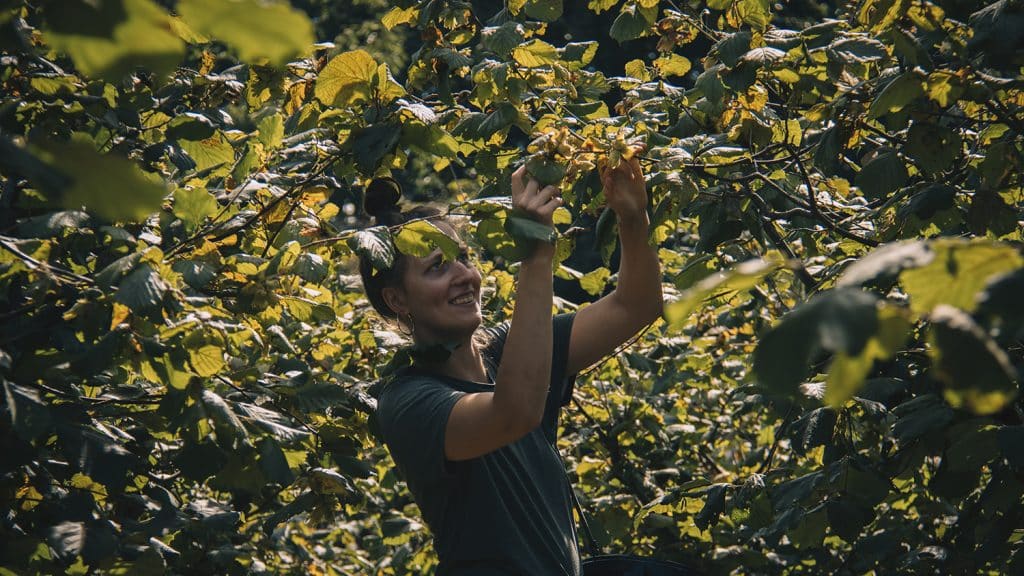

“IT’S COMMON IN AN ORCHARD TO KEEP GROWTH RIGHT DOWN, BUT WE LET OURS GROW UP WITH BLUEBELLS AND PRIMROSES”
So, what exactly is a cobnut? That, says Charles Tebbutt, founder of Food & Forest, is probably the question most often asked of him and his colleagues when they’re manning their Borough Market stand. The simple answer, he continues, is that a cobnut is a just hazelnut. But it’s a hazelnut with a very strong sense of time and place.
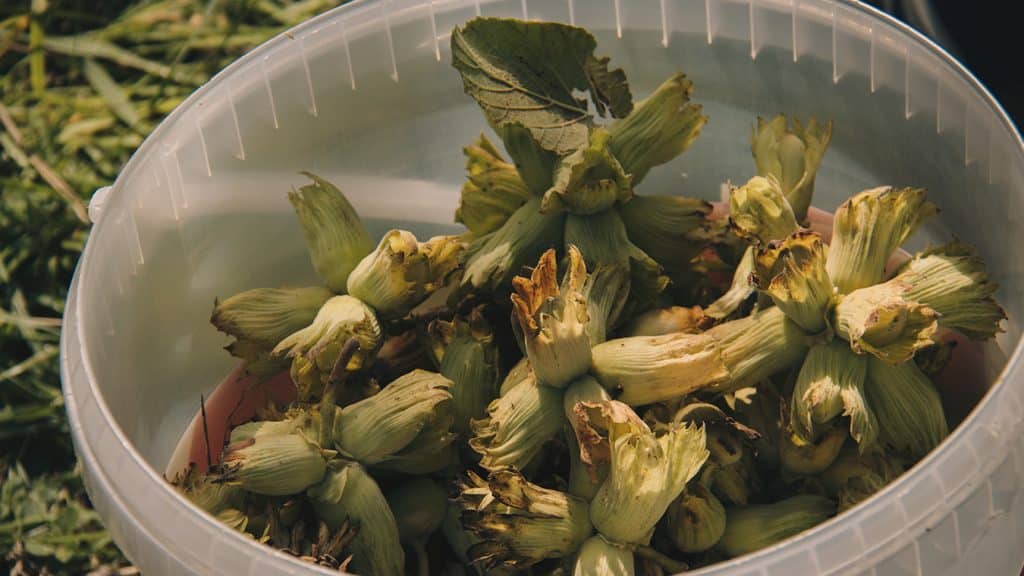
Around the world there are many species of hazel tree, from which numerous nut cultivars have been developed over the centuries, each one adapted to the microclimate and soil of its native region and the culinary preferences of the local population. The cobnut is an English variety synonymous with the county of Kent, where Charles and his colleagues maintain a beautiful historic orchard.
“The reason so many are grown in Kent is to do with the climate – it’s the Garden of England, after all – though there are producers elsewhere,” Charles explains. But while cobnuts would once have been a common sight in the shops and markets of London, production has in recent decades fallen off a cliff. “The reason it’s not more commonly grown today is that the nut has a peculiar shape and a very tight husk which makes it quite difficult to process mechanically. This adds an extra stage to the processing that you don’t get with other varieties.”
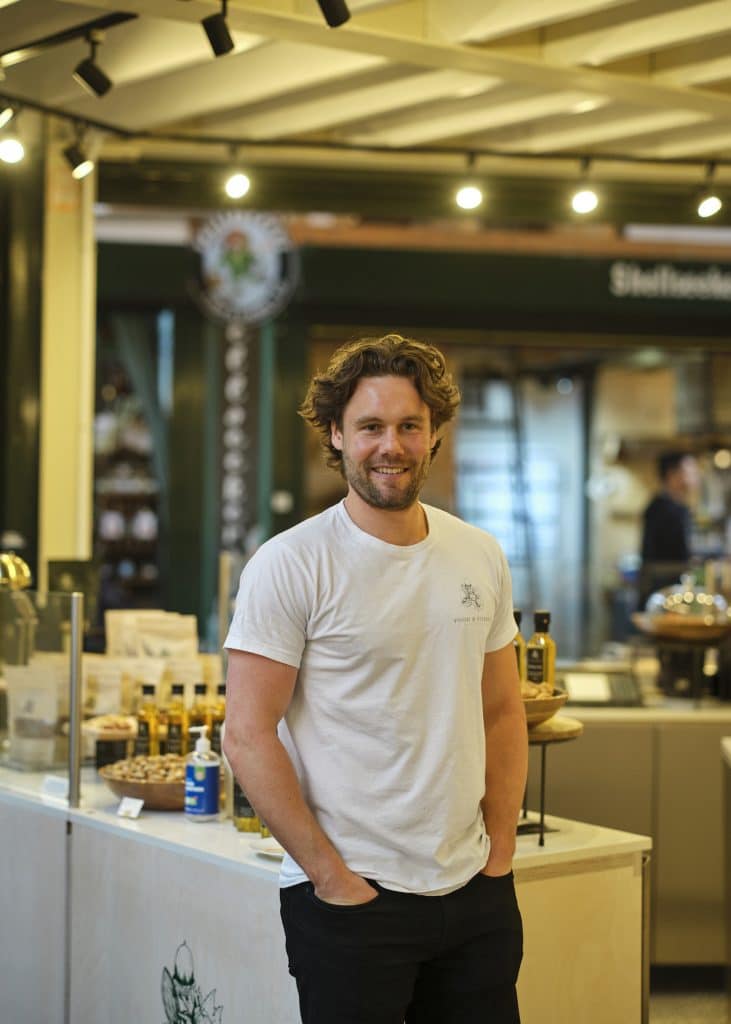
It also doesn’t help that the orchard’s entire bounty of cobnuts needs to be picked by hand in a matter of days, making harvesting hugely labour intensive. “Every year at the start of September, we harvest all our nuts in about two weeks,” says Charles. “The reason we work so quickly is that if you leave cobnuts on the trees for much longer you start losing catastrophic amounts to squirrels, which can genuinely be the difference between the year’s crop making or losing money.”
The 130-year-old orchard, which is managed in partnership with Gillian Jones under license from the National Trust, is located in the countryside close to Sevenoaks, bordered by high woodland. Like everything else at Food & Forest, the cobnuts are grown using agroforestry – a method of farming that limits soil erosion and encourages biodiversity by combining the cultivation of trees with that of other plants or animals. “The common practice in an orchard is to keep growth right down, mowing it every month or so, but we let ours grow up with bluebells and primroses,” Charles explains. The team have also been experimenting with the use of poultry to keep pests at bay.
For the first three weeks of September, the cobnuts kernels are sold on Charles’s stand in their fresh state. “When they’re fresh, they’re super creamy, with a kind of milky sappiness to them,” he says. “They have a lightness which is not there in dried or roasted nuts. I really like them – I find them refreshing, with a distinctive taste – but they have such a short window.”
Once that window is closed, the stall sells its cobnuts in their dried and roasted forms. Dried cobnuts are sweet and crunchy, with less of the milkiness of the fresh nuts – and that natural sweetness is intensified even further by roasting. “Roasting them creates more layers of flavour, really bringing out their sweet notes. It makes them great for cooking. We sell roasted cobnuts to bakeries for their cookies, cakes and patisseries. I’ve known people make dukkah – a Middle Eastern condiment made with herbs, nut, and spices – which I found really interesting. One of the stallholders at Borough Market uses them in vegan salads and another makes a wonderful dish of cobnuts, lentils and butternut squash. Personally, I like a bowl of good Greek yoghurt and some great honey, with roasted cobnuts sprinkled on top.”
Discover more
The secrets of better bread
Olivier Favrel of Olivier’s Bakery on why there are no shortcuts to baking good bread
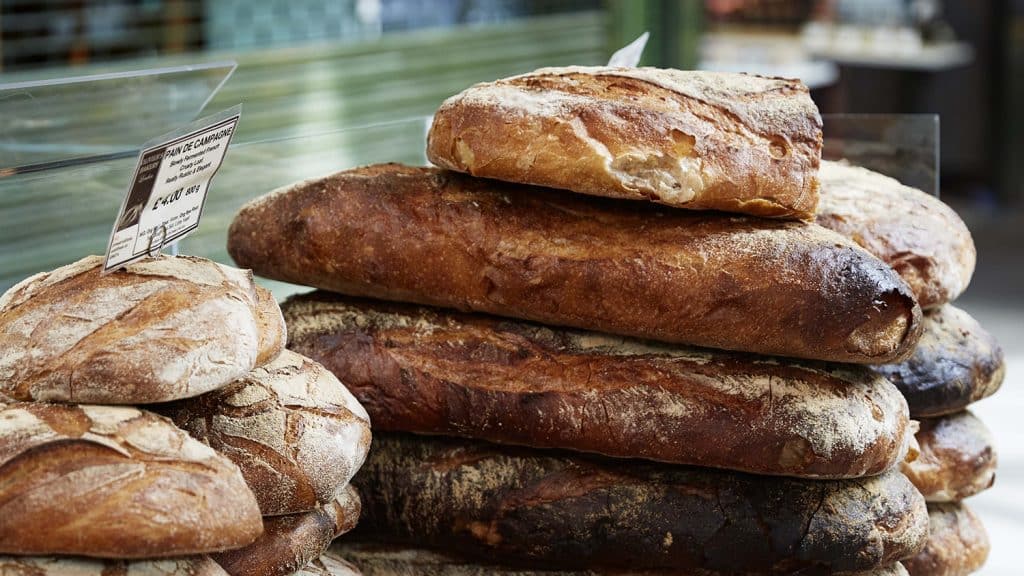

“WE DON’T WANT TO JUST PUSH A BUTTON ON A MACHINE FILLED WITH PRE-MIX; THERE IS NO CARE THERE”
Words: Olivier Favrel / Images: Kim Lightbody
You cannot accelerate. You cannot cut corners. You can only follow the process until it is ready. Bread is the food of life, and it’s a living thing, which is why the relationship between bread and baker is so important. You can’t start it and then do something else; you have to stay with it, feel it, observe to see how it reacts, and adjust your methods accordingly. An unhappy baker, a distracted baker, can’t make good bread.
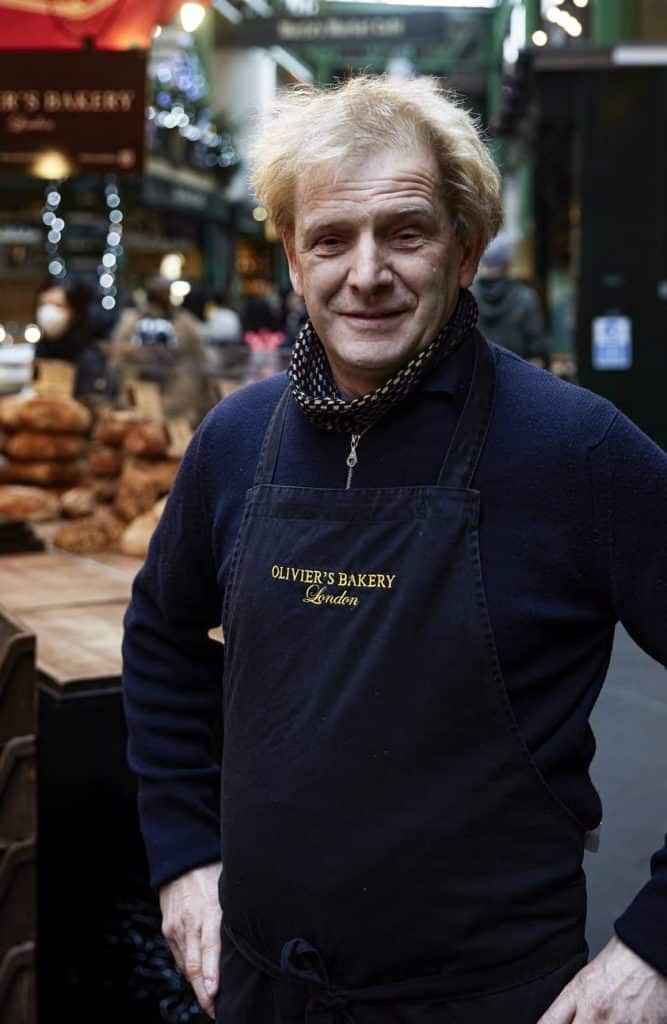
Good bread begins with the raw ingredient, which is good flour. We use organic British flour from Shipton Mill in Gloucestershire. Organic means no pesticides or chemical fertilisers have been used on the wheat, which means the grain is stronger and more deeply rooted in the soil, as it isn’t dependent on chemicals to grow and fight against the weather. This results in more nutrients and more flavour. Yet organic grain is not fully consistent. It changes according to the weather and the soil, so every week we need to think: how does this flour work?
This is good for us, because to do the same thing every week would be boring. We don’t want to just push a button on a machine filled with pre-mix; there is no care there. We have to adapt the quantities, the speed of mixing, the time, the temperature of fermentation and baking. Flour itself doesn’t taste of much; it is the water and salt and the way you use the flour that brings flavour to it. Time is the most important ingredient.
Most industrially made bread is rushed, which means adding stabilisers, soya and preservatives to speed up the process. Reducing the mixing time to seven or eight minutes, which is standard in most factories, results in much stronger chains of gluten, which are harder for your body to break down and digest. We spend around half an hour mixing, then each bread will spend four to six hours fermenting, then another two to three hours fermenting once it’s been shaped. If it’s not ready, it’s not rushed.
Another thing that creates flavour is the crust. Some people think a thin crust is a sign of better bread – but a thick crust will keep the inside of the bread softer for longer. We create ours by opening a damper on the oven during the final minutes of the cooking time, which allows the humidity in the chamber to escape and the sugars in the bread to caramelise, creating more flavour in both the crumb and the crust.
I didn’t go into baking to get rich. I am not looking to steal money from people. Our bread is priced well for what it is: made by hand, over the course of 12 hours, by skilled, experienced bakers. A loaf of our bread will feed you for a week. It will keep your family full.
From Borough Market: The Knowledge with Angela Clutton (Hodder & Stoughton 2022)
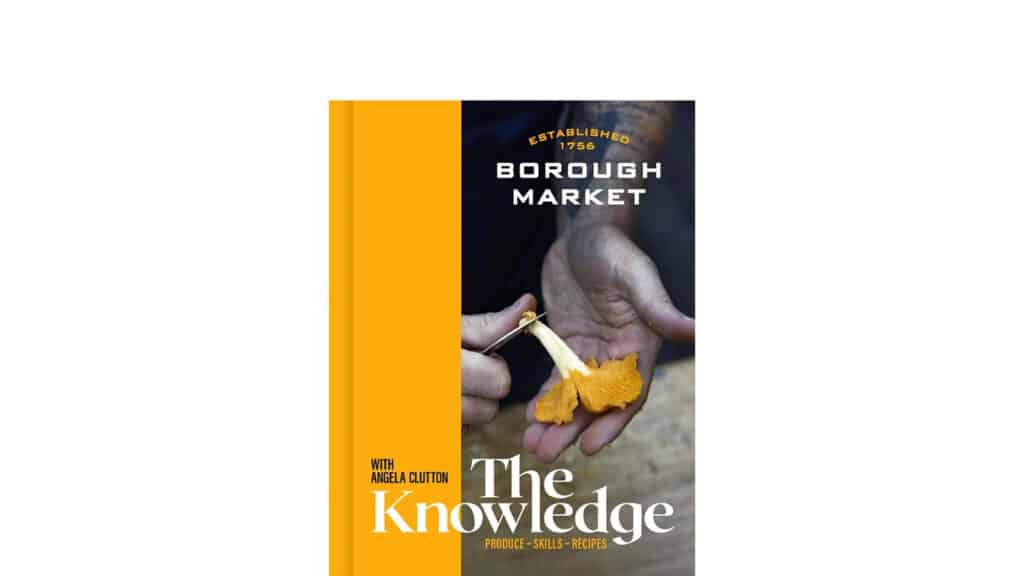
Discover more
Soft cheeses, hard choices
Author and cheese specialist Emma Young attempts to pick a perfect Borough Market cheese selection
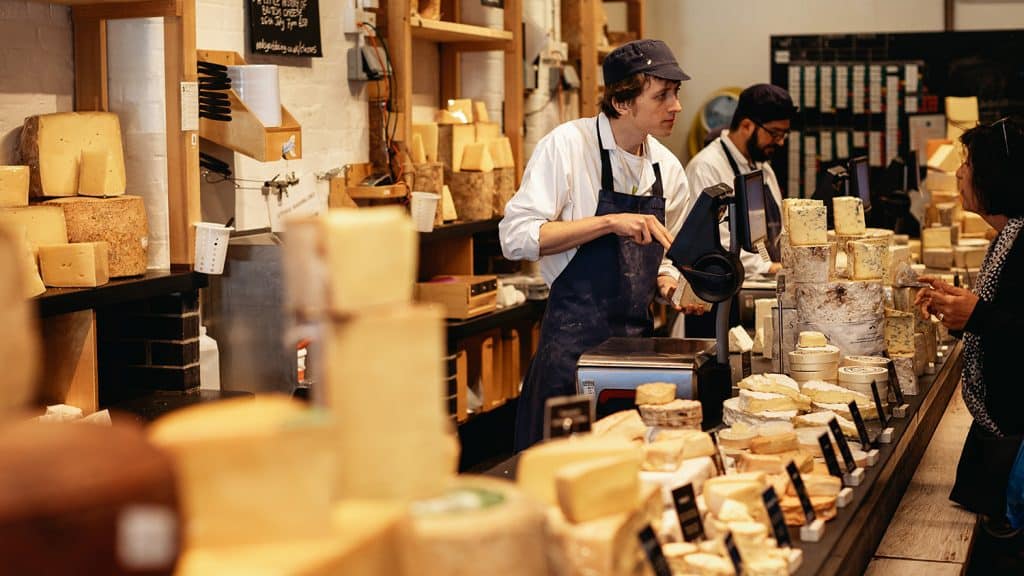

“THERE ARE SEVERAL HARD CHEESES THAT I’M INCAPABLE OF LETTING GO OF. BEAUFORT IS ONE OF THOSE CHEESES”
At Borough Market, finding amazing cheese is really not an issue. Choosing precisely which of the dozens of amazing cheeses to buy is, on the other hand, a significant challenge.
Emma Young knows a lot about Borough and even more about picking the perfect cheese to match your tastes, your mood, your recipe or your drink. Before becoming an author and cheese consultant and building a loyal social media following as The Cheese Explorer, Emma ingested a huge amount of knowledge (and even more French cheese) while working at the Market’s Mons Cheesemongers stall. Her debut book, The Cheese Wheel, lends her expert eye to the task of choosing and pairing cheese. To mark its launch on 17th August, she has kindly put together her suggestions for a perfect Borough Market cheeseboard. Ask her again tomorrow and the list would no doubt be different!
Mozzarella di bufala Campana, Italy
The Parma Ham & Mozzarella Stand
During the summer, my consumption of mozzarella di bufala increases dramatically. Although I eat it all year round, it becomes a fridge staple in the warmer months as its refreshing, saline and milky qualities are not only fabulous to eat alone, but also to pair with tomatoes or simply a drizzle of olive oil.
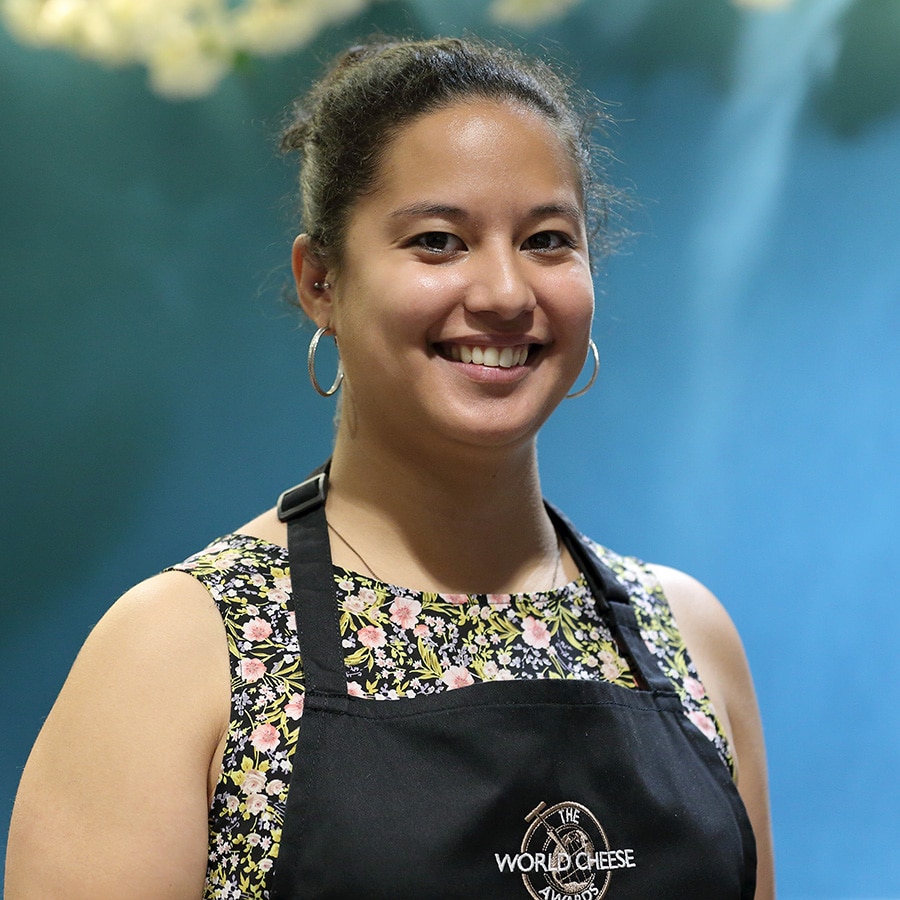
Beaufort, France
My fridge mainly consists of soft cheeses at any given moment. However, there are several hard cheeses which I adore and which, as soon as I taste them, I am incapable of letting go of. Beaufort is one of those cheeses. Alongside a savoury, umami guise, this Alpine cheese’s characteristic sweetness gives a further dimension and draws me in every time.
Torta de Barros, Spain
This is slightly more niche. A style of cheese that I wish for wider representation is the ‘torta’ style from Spain and Portugal. These are soft, typically washed-rind cheeses which use a vegetal coagulant from a cardoon (a thistle, like an artichoke). This coagulant creates an extra-gooey texture, resulting in an eating method that demands decapitation and spooning.
St Jude, UK
This is just the most glorious of cheeses and whole heartedly one of my favourite British cheeses, full stop. Made in Suffolk, its rich milk and sometimes fudgy, sometimes feathered texture allow for not only a fabulous flavour but also a wonderful textural sensation.
Roquefort, France
Yes, this is a strong cheese seen more frequently in the cooler months, but roquefort straight out of the fridge on a hot day is incredibly cooling and refreshing. Its spicy kick wakes you up too when you’re in a summery daze.
The Cheese Wheel by Emma Young (Ebury Press, £14.99)
Cask of thousands
Mark Riddaway takes a slightly groggy look back at a thousand years of Southwark ale
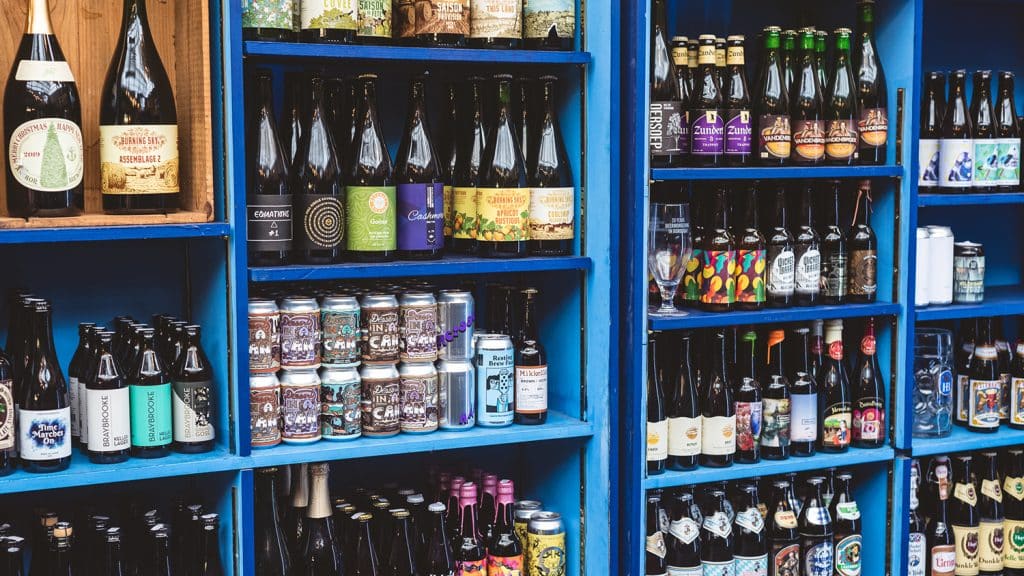

“WHERE THERE ARE MAJOR TRAVEL ROUTES LIKE LONDON BRIDGE, THERE WILL ALWAYS BE THIRSTY TRAVELLERS EAGER FOR A BEER”
Words: Mark Riddaway
In the prologue to his boisterous Canterbury Tale of adultery, mistaken identity and flatulence, Chaucer’s well-oiled miller asks his audience for their indulgence: “If that I misspeke or say / Wite it the ale of Southwark, I you pray.” Or, in other words: if I can’t talk properly, blame the Borough beer.
Southwark has been closely associated with beer for the entire thousand-year span of Borough Market’s history – with boozing and food shopping having thrived here for very similar reasons. For centuries, London Bridge was the only route into the capital from the south, meaning that Borough High Street was a vital thoroughfare, especially after the murder of Thomas Becket in 1170 turned Canterbury into a major pilgrimage site. Where there are major travel routes, there will always be commercial opportunities – hence the evolution of the market – and there will always be thirsty travellers eager for a beer.
The Tabard, which was established at the foot of the bridge in 1307 and played host to the pilgrims in Chaucer’s novel, was the most famous of the area’s pubs. But it was far from alone. John Stow, in his Survey of London (1598), reels off a long list of those near the high street, many of which had been there for centuries: “From thence towards London Bridge, on the same side, be many fair inns, for receipt of travellers, by these signs, the Spurre, Christopher, Bull, Queene’s Head, Tabarde, George, Hart, Kinge’s Head, etc.” The St Christopher, the George and the Old King’s Head are still trading with the same names today.
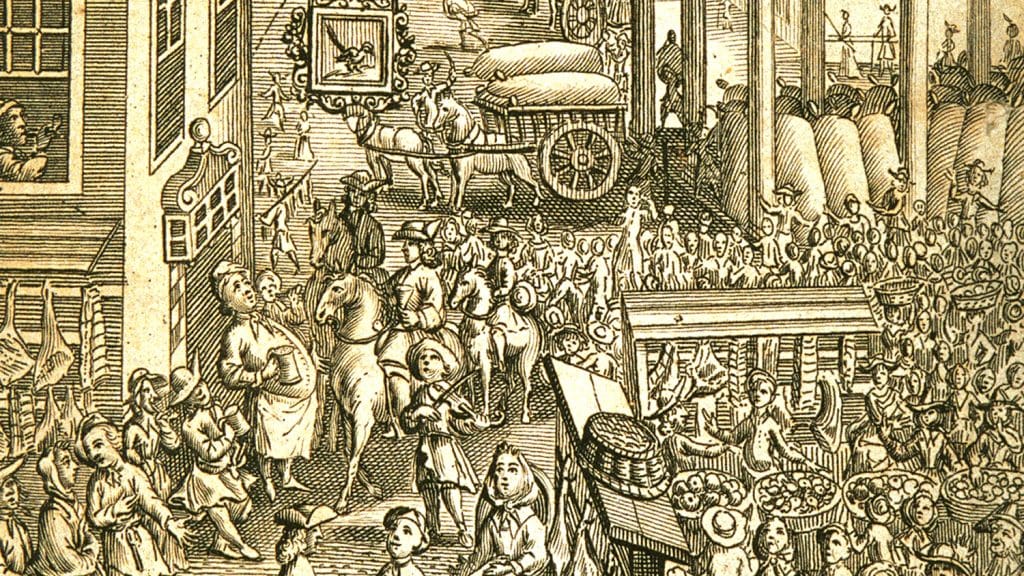
Hopped up
During the medieval period, the ales consumed in the area’s pubs differed from modern beers in a fundamental way: it contained no hops. The simplest brews were made from grain and hot water, fermented with wild yeasts. Spices could be thrown in to add a bit of zing, but hops – those magical, flavour-packed flowers blessed with a bitter edge and exceptional preservative properties – were frowned upon despite their widespread adoption by continental brewers. In fact, they were frowned upon specifically because of their widespread adoption by foreigners: a clear sign to any proud Englishman that there must be something iffy about them.
Most pubs brewed their own ale, but Borough was also home to dozens of commercial breweries, and these were among the first in Britain to popularise the use of hops. By the 15th century, Dutch brewers had begun to build a significant presence in the area, making their delicious hopped beer (in the parlance of the time, beer contained hops, ale didn’t). This was the perfect place for them to settle: a frontier town, free from the strictures of the Worshipful Company of Brewers, which had built a stranglehold in the City of London and was working tirelessly to protect the interests of its hop-averse members.
The ale lobby did its best to convince drinkers that foreign beers were hallucinogenic, poisonous or fattening (in his Dietary of 1542, Andrew Boorde insisted, a little rudely, that “Dutch beer does make a man fat, and does inflate the belly, as it does appear by the Dutch men’s faces and bellies”), but the fact that English ale spoiled in a matter of days while continental brews tasted lovely and lasted for months soon made the commercial case for the adoption of hops pretty overwhelming. Kent, with its perfect weather conditions, soon became one of the world’s great centres for hop growers, and the brewers of Southwark their biggest customers.
Laying Anchor
Southwark’s most famous brewery, the Anchor, was established in 1616 by a London clothworker called James Monger, on land next to the Globe Theatre. The brewhouse passed down through the generations, but the family eventually became too grand and noble to be associated with so base a business, so it was sold in 1729 to its long-serving manager, Ralph Thrale.
Thrale’s son Henry, who inherited the Anchor in 1758, was a good friend of Samuel Johnson, who lived with him and his wife Hester (according to James Boswell, “a lady of lively talents, improved by education”) and helped them to become regular fixtures on the London literary scene. When he wasn’t hobnobbing with famous people, chasing after women of ill repute or bribing the Gordon rioters with beer and meat to stop them tearing down his brewery, Henry Thrale was busy turning the Anchor into a major commercial success. After his death in 1781, the business was put up for sale, with Johnson acting as one of the executors. On being asked his opinion as to the value of the property, he replied: “Sir, we are not here to sell a parcel of boilers and vats, but the potentiality of growing rich beyond the dreams of avarice.”
That potentiality was realised by a consortium led by David Barclay, one of the founding fathers of the banking dynasty that bore his name, and hence a specialist in avaricious dreams. With some serious money behind it, the Barclay Perkins & Co brewery grew at a rapid pace. In 1782, the Anchor’s annual output was 85,700 barrels. By 1809 it had passed 260,000 barrels, making it the largest brewery in the world. In 1832, a devastating fire ripped through the site – but the rebuilt factory was an industrial marvel, and by 1867 it was turning out a staggering 423,444 barrels. Edward Walford, writing in 1878, describes a vast complex whose “operations are to be seen in the utmost perfection, and on the most magnificent scale”. He finds himself a little overwhelmed by the steam engines, coolers, pumps, cogs, conveyors and vast copper boilers. The storerooms are “almost interminable”, containing 200 vats, each with an average capacity of 30,000 gallons. The brewery’s stables, he writes, can accommodate 200 dray horses.
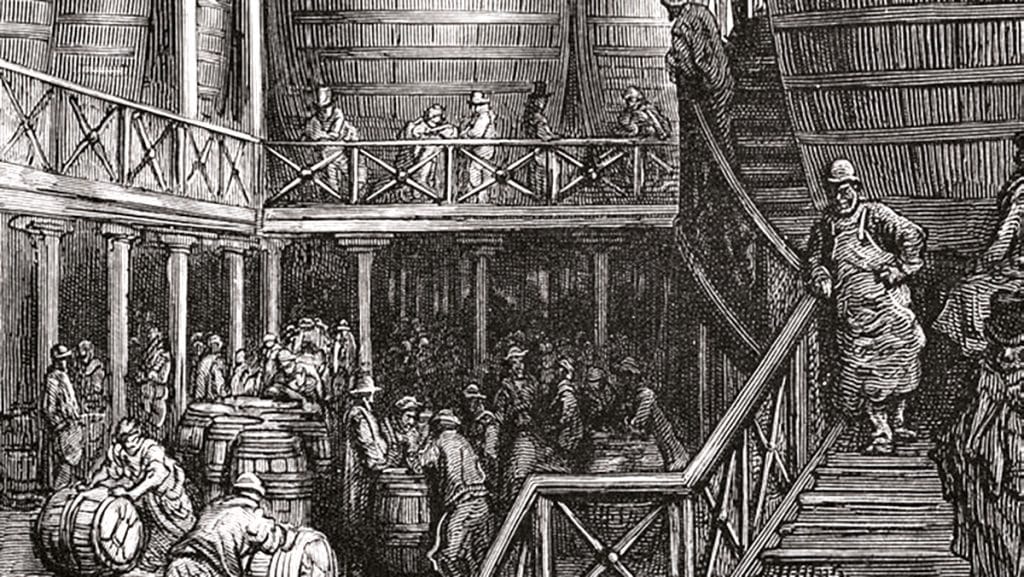
Such was its epic scale, the Anchor became a regular stop for luminaries such as Otto von Bismarck and Napoleon III. One VIP who would regret dropping by was Marshal Haynau, an Austrian general notorious for his ill treatment of women. When Haynau paid a visit in September 1850, word quickly got around the principled and heavily muscled draymen that a vicious woman-flogger was on site, and an angry crowd began to gather. The marshal was knocked down with a bail of straw, stripped of his clothes and roundly beaten by the workers, who were joined by porters from Borough Market. According to a contemporary report in the Spectator, Haynau “was surrounded, pelted, struck with every available missile, and even dragged along by his moustache, which offered ample facilities to his assailants from its excessive length, it reaching nearly down to his shoulders”. He eventually found refuge in the George pub, where he hid in a locked room until the police arrived.
Barclay Perkins may have dominated the Southwark beer trade, but plenty of smaller breweries thrived in its shadow: Courage near Tower Bridge (confusingly also known as the Anchor Brewery, as if one wasn’t enough), founded in 1787; the Black Eagle Brewery, later known as Noakes & Co, founded in 1697 at White’s Grounds; Jenner’s on Southwark Bridge Road and many, many more.
Factored in
The presence of all these brewers turned Southwark into a major centre for the hop trade. The area was a magnet for factors (the middlemen who sold the growers’ hops) and merchants, who acted on behalf of the breweries. Any factoring company worth its salt had a fancy showroom in Southwark, where samples could be inspected. The biggest of the merchants was Wigan’s, which had vast warehouses on Southwark Street (and, apparently, a very handy cricket team).
Ironically, the one local building that just about everyone would associate with hops, the magnificent Hop Exchange, had less to do with the trade than the name suggests. Opened in 1867, it was built by speculators who hoped to cash in by providing a trading floor and offices for hop factors and merchants. But the businesses it needed to attract were mostly quite happy in their own buildings. In the end, most of the space ended up being rented out to an entirely random assortment of unrelated occupants.
The hop trade was eventually killed by a combination of war and economics. Several of Southwark’s hop warehouses were suffered bomb damage during the Second World War, and their replacements were built in Paddock Wood, Kent, rather than Borough. Hop factors then found themselves out of work after the establishment of the Hops Marketing Board, which centralised the trade. Finally, the use of hop pellets and concentrates, a surge in international competition and the growing popularity of lager combined to slash demand for Kentish hops.
A heady brew
Southwark’s brewers found themselves in a similar state of decline. Barclay Perkins, long past its peak, merged with Courage in 1955. The great Anchor brewery was demolished in 1981, the Courage brewing operation having moved to Reading. As the industry became concentrated in the hands of a few creatively moribund megacorporations, and kegs of bland, fizzy lager replaced barrels of real ales in the nation’s pub, British beer seemed set for the slops tray of history.
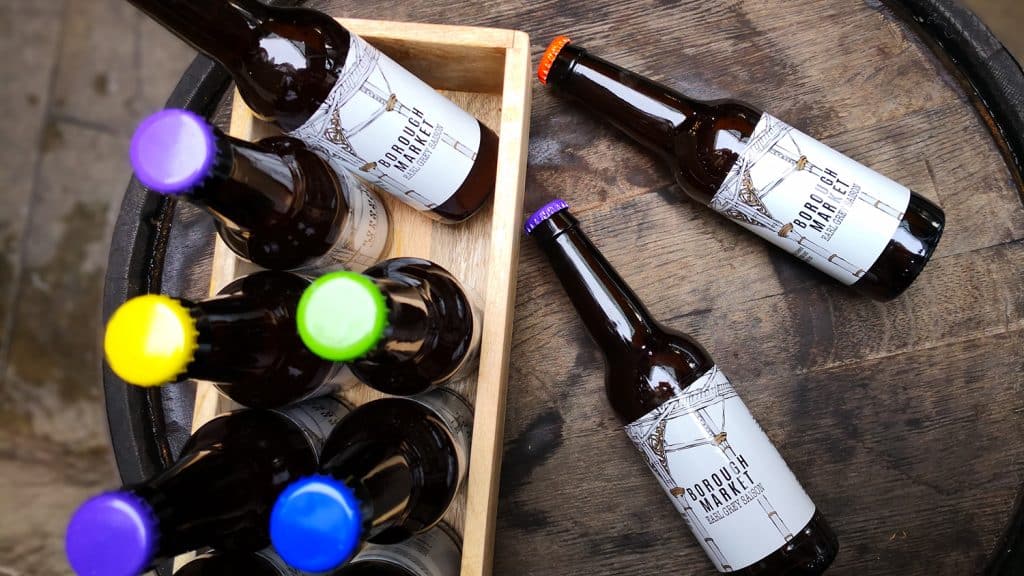
Over the past decade or two, there has been a Lazarus-like revival in the sector. Pioneers such as Borough Market’s Utobeer and The Rake bar helped create a growing demand for craft beers (and were doing so before the expression ‘craft beers’ even existed) and new breweries began to spring up in the railway arches and old industrial buildings of Southwark. In 2007 there were just 10 breweries in the whole of London, now there a well over 100, at least a dozen of which are in Southwark, home to the famous Bermondsey beer mile. Even Borough Market got in on the act, tapping into the expertise of its stallholders and contributors to create several annual runs of its own Borough Market Beer, including a damson porter and an earl grey saison, all of them made with hops grown in the Market Hall.
If there’s a bit of misspeaking going on around these parts, there’s a good chance that the ale of Southwark is once again to blame. And while such overindulgence isn’t to be encouraged, at least it’s historically appropriate.
Mark Riddaway is the author of Borough Market: Edible Histories, available now in paperback
Q&A: James Whetlor
Chef and barbecue expert James Whetlor on cooking over fire, building your own barbecue and sourcing the right ingredients
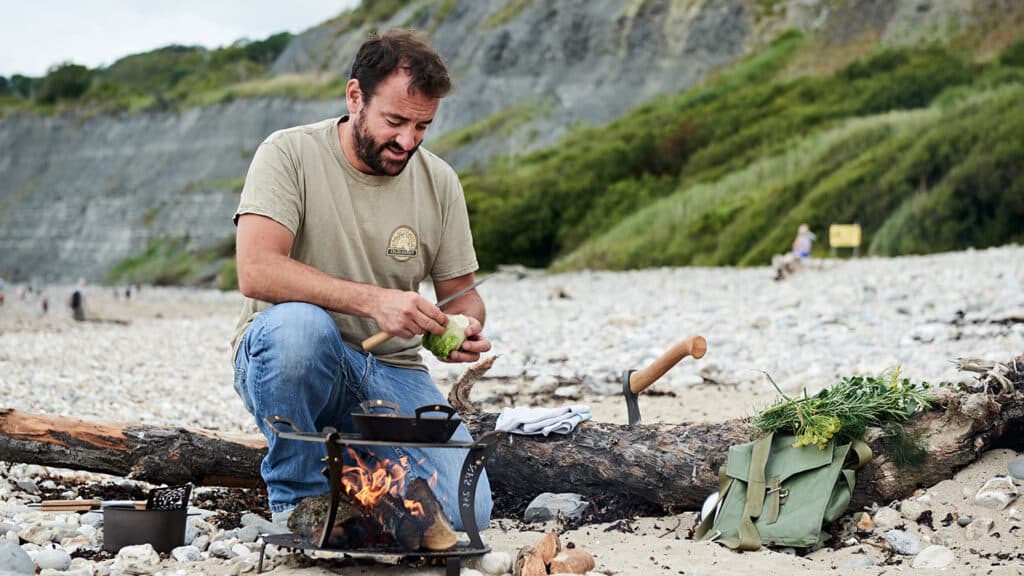

“IF YOU LIGHT A FIRE AND START COOKING OVER IT, PEOPLE INSTINCTIVELY COME AND SIT NEXT TO YOU. IT’S IN OUR MAKEUP”
Interview: Mark Riddaway / Portrait: Neil White
James Whetlor started his cooking career at The Eagle, the legendary gastropub in Farringdon, before returning to his home county of Devon to work as a chef at River Cottage. He went on to found Cabrito Goat Meat, which takes kid goats that would otherwise be euthanised by the dairy industry and raises them within a network of high-welfare farms to supply meat to butchers and restaurants. James is also a whiz with a barbecue. His new book, The DIY BBQ Cook Book, provides instructions and recipes for creating your own barbecue from upcycled scrap and inexpensive building materials.
You’re clearly a man who loves cooking outdoors over fire. What’s the appeal?
The main thing that comes to mind is a Michael Pollan quote about how no one ever comes in and huddles around a microwave. There’s something deeply primal about cooking over fire. If you light a fire and start cooking over it, people instinctively come and sit next to you. That’s simply part of our makeup.
Also, cooking on a barbecue, you get flavours and textures that you just can’t with gas or electric. Boil up some purple sprouting broccoli on a hob and it’s delicious, but shove it on a barbecue and you get all the flavour of the broccoli plus the extra smoke and the charred edges and the rough textures. If you put some chicken in a tandoori marinade and then roast it in the oven, it’ll taste perfectly good, but it won’t have those seared edges and amazing variations in flavour and texture.
Finally, it’s enforced relaxation, because you can’t really leave it alone. If your life is as busy as mine, with two kids and work, having an enforced period where all you can do is basically sit in the garden watching something cook, that’s really good.
The DIY BBQ Cook Book explores how a barbecue can be conjured up from anything from a pile of breeze blocks to the drum of a washing machine. Are you a particularly practical man?
Not really. The first line of the book is: “I can’t put up a shelf.” That’s absolutely true. And the point is that you don’t have to have any real skills – just a bit of problem-solving and a certain amount of brute force. The book was born of my daughter’s sixth birthday. She wanted a party on the beach. I looked at my Big Green Egg barbecue and thought, I’m not lugging that all the way down. Instead, I picked up this washing machine drum that I’d smashed out of a broken washing machine. I took one of the grills from the Egg and laid it on top, and thought, I’ll give that a go. It was such a success I began to I wonder what else I could knock up.
All you need for a barbecue is somewhere to put the fire, a grill over the top, and something to hold it all in place. Eight breeze blocks, a bit of chicken wire and a paving slab, and you’ve got yourself something that will cook a whole lamb leg perfectly. A proper tandoor costs about £400 to buy, but you can buy three flowerpots and a bag of sand and make yourself a tandoor for £50.
BARBECUE, BOROUGH STYLE
You’ll find high-quality, high-welfare meat and poultry at Ginger Pig, Northfield Farm, Wild Beef and Wyndham House Poultry. For whole fresh fish, head to Shellseekers Fish & Game or Furness Fish Markets. Hickson & Daughter and Stark’s Fruiterers will handle the seasonal veg. Spice Mountain is a treasure trove of spices for your marinades and rubs, while Pimento Hill, De La Grenade, Arabica, Raya and Fitz Fine Foods between them offer a wide range of seasonings and sauces.
Does that approach of making something out of very little take us closer to the roots of American barbecue culture than a super-sophisticated outdoor oven costing hundreds of pounds?
I think it’s important with barbecue culture that we acknowledge where it’s from. I built a breeze-block smoker for the book, and I was very conscious that this technique of cooking – dig trenches, fill them with coals, splay the pigs out on top of iron poles and hang them over the trenches – is directly lifted from the Virginia tobacco plantations of the 16th, 17th century in America. That whole style of cooking came from enslaved Black people who had been stolen from Senegambia and brought across the Atlantic. These enslaved people kept part of their culture alive to such a degree that it seeped into US food. If you’ve ever seen Gone With The Wind, they have those amazing parties, all that amazing food, but who do you think cooked all the food? It was enslaved Black people using techniques we still use today and now celebrate as American barbecue culture.
In the book, you write in depth about the roots of US barbecue, but your recipes take in many other culinary influences, from Moroccan to Ethiopian, to Indian. What was behind that choice?
I love brisket and pork butts and sticky sauces and chicken wings and all that classic American stuff, but there are other parts of the world where people have been cooking over fire for longer than the USA has existed. According to the World Health Organisation, over half the population of the world still cooks over wood or charcoal every day. British barbecuing has come a long way in the past 10 years, and as we do with most things we’ve pointed our antennae towards America, but there’s much more diversity in barbecuing than we’re sometimes led to believe.
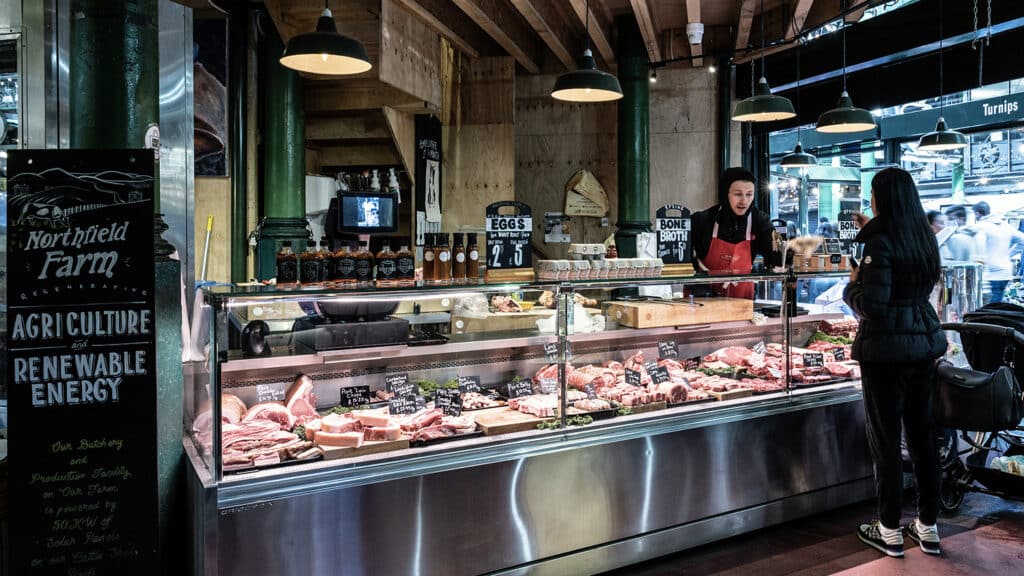
Let’s talk ingredients. What difference does the quality of meat make when you’re cooking on a barbecue?
A massive difference. If you’re eating rubbish meat from animals that have not been fed the best diets and not had the most exercise, it won’t have the flavour, the texture, the fat content. Sure, you can cover a lot of shortfalls in meat quality by covering it in a lot of sauce or smoking the hell out of it so it tastes of something other than the product, but that’s not the way I think. I learnt to cook at The Eagle. They might as well have tattooed it onto your skull: buy the best products you can and don’t mess with them. For ethical reasons, we should obviously be supporting higher-welfare, better-cared-for animals that come from a good supply chain that cares about its standards, but the meat tastes better too.
So, how should be go about sourcing meat?
In an ideal world, you should know the name of the farmer who produced your meat. I appreciate that for many people that isn’t very easy to do, but within a few miles of you there’s probably a very good butcher who does know the name of the farmer – and that’s good enough. The other thing that people underestimate about butchers is you can walk in there with questions. You can say: “I’ve got these people coming, I’ve got this to cook on, I quite fancy it tasting like this.” Your butcher will go: “Well, here are your options.” They know food, and they’ve made it their job to know food.
What’s the secret when it comes to barbecuing fish?
The trick is ‘hot’. I would always recommend people cook whole fish, because it will inherently hold itself together better than a fillet. Make sure it’s properly oiled, make sure it’s properly seasoned, and then cook it like you would a steak. I think that’s the way to think about it. Get the barbecue really, really hot, drop it on, and then whatever you do don’t fiddle with it. If you leave it alone, the skin won’t stick and you’ll get those little ridges where the grills are, and loads of nice little burnt crispy bits that give you lots of different flavours and textures. When you turn it, get your spoon or spatula under the top ridge of the fish and flip it over its belly. That way you, it should hold together. You’ll know it’s done once its eyes go white.
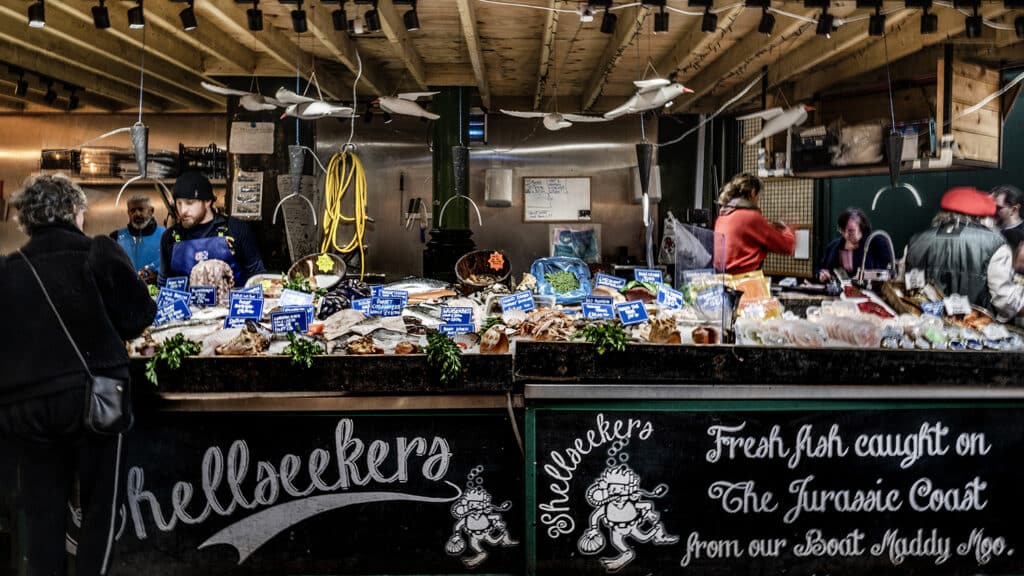
It’s not all about the protein though, is it? Unsurprisingly, as a former River Cottage chef, you take veg very seriously.
The seasonal stuff is just fantastic, right? Buy the best seasonal veg you can, stick it on the barbecue, a squeeze of lemon, a bit of salt, and eat it – amazing. For the book, we did some photography at Trill Farm Garden in Devon. They’ve got five acres, it’s all organic, and honestly, it is unbelievable what they achieve in that space. It was the end of August, so almost the perfect time to be barbecuing, and I had a load of their hispi cabbage, a load of leeks, a load of tomatoes. It all went on this massive barbecue that I’d built. Veg doesn’t require the tending and the prep and the cooking time that meat demands. Maybe trim it a little bit, marinate it and cook it for a few minutes. I was just cutting them in half, dipping them in olive oil, and throwing them on the fire. They were coming back charred and succulent and juicy. Just make sure your veg is properly seasoned, and you’ll have something genuinely fantastic in a matter of minutes.
